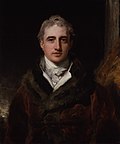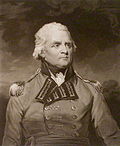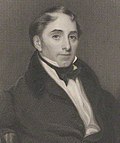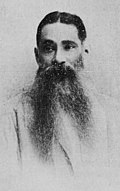List of office-holders in India
List of rulers
[edit]List of rulers of Sultans of Delhi
[edit]| Sultan of Delhi | |
|---|---|
State | |
 Coin of last Sultan | |
| Details | |
| Style | Sultan, Sultan of Sultans, Shah |
| First monarch | Qutb ud-Din Aibak |
| Last monarch | Ibrahim Lodi |
| Formation | 1206 |
| Abolition | 1526 |
| Residence | |
| Appointer | Hereditary |
Sultans of Delhi were the rulers of the Muslim empire based in Delhi that stretched over large parts of the subcontinent during the period of Medieval India, for 320 years (1206–1526).[1][2] Following the conquest of South Asia by the Ghurids, five unrelated heterogeneous dynasties ruled over the Delhi Sultanate sequentially: the Mamluk dynasty (1206–1290), the Khalji dynasty (1290–1320), the Tughlaq dynasty (1320–1414),[3] the Sayyid dynasty (1414–1451), and the Lodi dynasty (1451–1526). It covered large swaths of territory in modern-day India, Pakistan, and Bangladesh.[4]
This list contains the rulers of Delhi Sultanate in chronological order.[5]
Mamluk dynasty (1206–1290)
[edit]| S/N | Name of ruler | Birth Date | Death Date | Beginning of reign | End of reign | Notes |
|---|---|---|---|---|---|---|
| 1 | Qutbuddin Aibak | 1150 | 14 November 1210 | 25 June 1206 | 14 November 1210 | |
| 2 | Aram Shah | unknown | June 1211 | December 1210 | June 1211 | Son of Aibak |
| 3 | Iltutmish | unknown | 30 April 1236 | June 1211 | 30 April 1236 | Son-in-law of Aibak |
| 4 | Ruknuddin Firuz (Firuz I) | unknown | 19 November 1236 | April/May 1236 | November 1236 | Son of Iltutmish |
| 5 | Razia Sultan | unknown | 15 October 1240 | November 1236 | 20 April 1240 | Daughter of Iltutmish |
| 6 | Muiz ud din Bahram | 9 July 1212 | 15 May 1242 | May 1240 | 15 May 1242 | Son of Iltutmish |
| 7 | Ala-ud-Din Masud Shah | unknown | 10 June 1246 | May 1242 | 10 June 1246 | Son of Ruknuddin Firuz |
| 8 | Nasiruddin Mahmud Shah (Mahmud I) | 1229 or 1230 | 18 February 1266 | 10 June 1246 | 18 February 1266 | Grandson of Iltutmish |
| 9 | Ghiyas ud din Balban | 1216 | 1287 | February 1266 | 1287 | Turkish noble in the court of Iltutmish |
| 10 | Muiz ud din Qaiqabad | 1269 | 1 February 1290 | 1287 | 1 February 1290 | Grandson of Balban |
| 11 | Shamsuddin Kayumars | 1285/1287 | 13 June 1290 | 1 February 1290 | 13 June 1290 | Son of Qaiqabad |
Khalji/Khilji dynasty (1290–1320)
[edit]| S/N | Name | Birth date | Death date | Beginning of reign | End of reign | Notes |
|---|---|---|---|---|---|---|
| 12 | Jalal-ud-din Khalji (Firuz II) | 1220 | 19 July 1296 | 13 June 1290 | 19 July 1296 | |
| – | Ruknuddin Ibrahim | unknown | after 1296 | July 1296 | November 1296 | Son of Jalal-ud-din Khalji. He ruled for a short time, not always indicating his names on the lists. |
| 13 | Alauddin Khalji | c. 1266 | 4 January 1316 | November 1296 | 4 January 1316 | Nephew of Jalal-ud-din Khalji |
| 14 | Shihabuddin Omar | 1310 or 1311 | April 1316 | 5 January 1316 | April 1316 | Son of Alauddin Khalji |
| 15 | Qutbuddin Mubarak Shah | 1299 | 9 July 1320 | 14 April 1316 | 1 May 1320 | Son of Alauddin Khalji |
Outside of the dynasties (1320)
[edit]| S/N | Name | Birth date | Death date | Beginning of reign | End of reign | Notes |
|---|---|---|---|---|---|---|
| 16 | Khusrau Khan | unknown | 1320 | 10 July 1320 | 5 September 1320 | He ruled for a short time, not founding a dynasty. |
Tughluq dynasty (1320–1414)
[edit]| S/N | Name | Birth date | Death date | Beginning of reign | End of reign | Notes |
|---|---|---|---|---|---|---|
| 17 | Ghiyath al-Din Tughluq (Tughluq I) | unknown | 1 February 1325 | 8 September 1320 | 1 February 1325 | |
| 18 | Muhammad bin Tughluq (Muhammad II) | c. 1290 | 20 March 1351 | 1 February 1325 | 20 March 1351 | Son of Ghiyath al-Din Tughluq |
| 19 | Firuz Shah Tughlaq (Firuz III) | 1309 | 20 September 1388 | 23 March 1351 | 20 September 1388 | Son-in-law of Ghiyath al-Din Tughluq |
| 20 | Tughluq Khan (Tughluq II) | unknown | 14 March 1389 | 20 September 1388 | 14 March 1389 | Grandson of Firuz Shah Tughlaq |
| 21 | Abu Bakr Shah | unknown | after 1390 | 15 March 1389 | August 1390 | Grandson of Firuz Shah Tughlaq |
| 22 | Nasir ud din Muhammad Shah III (Muhammad III) | unknown | 20 January 1394 | 31 August 1390 | 20 January 1394 | Son of Firuz Shah Tughlaq |
| 23 | Ala ud-din Sikandar Shah | unknown | 8 March 1394 | 22 January 1394 | 8 March 1394 | Son of Nasir ud din Muhammad Shah III |
| 24 | Nasir-ud-din Mahmud Shah Tughluq | unknown | February 1413 | March 1394 | February 1413 | Son of Nasir ud din Muhammad Shah III |
| – | Nasir-ud-din Nusrat Shah Tughluq | unknown | 1398 or 1399 | January 1395 | 1398 or 1399 | Brother of Tughluq Khan. Mahmud Shah's anti-king, claimant to the throne, sub-ruler. |
Sayyid dynasty (1414–1451)
[edit]| S/N | Name | Birth date | Death date | Beginning of reign | End of reign | Notes |
|---|---|---|---|---|---|---|
| 25 | Khizr Khan | unknown | 20 May 1421 | 28 May 1414 | 20 May 1421 | |
| 26 | Mubarak Shah | unknown | 19 February 1434 | 21 May 1421 | 19 February 1434 | Son of Khizr Khan |
| 27 | Muhammad Shah (Muhammad IV) | unknown | January 1445 | February 1434 | January 1445 | Grandson of Khizr Khan |
| 28 | Alam Shah | unknown | July 1478 | January 1445 | 19 April 1451 | Son of Muhammad Shah |
Lodi dynasty (1451–1526)
[edit]| S/N | Name | Birth date | Death date | Beginning of reign | End of reign | Notes |
|---|---|---|---|---|---|---|
| 29 | Bahlul Lodi | 1420 | 12 July 1489 | 19 April 1451 | 12 July 1489 | |
| 30 | Sikandar Lodi (Sikandar II) | 17 July 1458 | 21 November 1517 | 17 July 1489 | 21 November 1517 | Son of Bahlul Lodi |
| 31 | Ibrahim Lodi | 1480 | 21 April 1526 | November 1517 | 21 April 1526 | Son of Sikandar Lodi |
Family trees
[edit]Mamluk dynasty (1206-1290)
[edit]| Mamluk dynasty | |||||||||||||||||||||||||||||||||||||||||||||||||||||||||||||||||||||||||||||||||||||||||||||||||||||||||||||||||||||||||||||||||||||||||||||||||||||||||||||||||||||||||||||||||||||||||||||||||||||||||||||||||||||||||||||||||||||||||||||||||||||||||||||||||||||||||||||||||||||||||||||||||||||||||||||||||||||||||||||||||||||||||||||||||||||||||||||||||||||||||||||||||||||||||||||||||||||||||||||||||||||||||||||||||||||||||||||||||||||||||||||||||||||||||||||||||||||||||||||||||||||||||||||||||||||||||||||||||||||||||||||||||||||||||||||||||||||||||||||||||||||||||||||||||||||||||||||||||||||||||||||||||||||||||||||||||||||||||||||||||||||||||||||||||||||||||||||||||||||||||||||||||||||||||||||||||||||||||||||||||||||||||||||||||||||||||||||||||||||||||||||||||||||||||||||||||||||||||||||||||||||||||||||||||||||||||||||||||||||||||||||||||||||||||||||||||||||||||||||||||||||||||||||||||||||||||||||||||||||||||||||||||||||||||||||||||||||||||||||||||||||||||||||||||||||||||||||||||||||||
|---|---|---|---|---|---|---|---|---|---|---|---|---|---|---|---|---|---|---|---|---|---|---|---|---|---|---|---|---|---|---|---|---|---|---|---|---|---|---|---|---|---|---|---|---|---|---|---|---|---|---|---|---|---|---|---|---|---|---|---|---|---|---|---|---|---|---|---|---|---|---|---|---|---|---|---|---|---|---|---|---|---|---|---|---|---|---|---|---|---|---|---|---|---|---|---|---|---|---|---|---|---|---|---|---|---|---|---|---|---|---|---|---|---|---|---|---|---|---|---|---|---|---|---|---|---|---|---|---|---|---|---|---|---|---|---|---|---|---|---|---|---|---|---|---|---|---|---|---|---|---|---|---|---|---|---|---|---|---|---|---|---|---|---|---|---|---|---|---|---|---|---|---|---|---|---|---|---|---|---|---|---|---|---|---|---|---|---|---|---|---|---|---|---|---|---|---|---|---|---|---|---|---|---|---|---|---|---|---|---|---|---|---|---|---|---|---|---|---|---|---|---|---|---|---|---|---|---|---|---|---|---|---|---|---|---|---|---|---|---|---|---|---|---|---|---|---|---|---|---|---|---|---|---|---|---|---|---|---|---|---|---|---|---|---|---|---|---|---|---|---|---|---|---|---|---|---|---|---|---|---|---|---|---|---|---|---|---|---|---|---|---|---|---|---|---|---|---|---|---|---|---|---|---|---|---|---|---|---|---|---|---|---|---|---|---|---|---|---|---|---|---|---|---|---|---|---|---|---|---|---|---|---|---|---|---|---|---|---|---|---|---|---|---|---|---|---|---|---|---|---|---|---|---|---|---|---|---|---|---|---|---|---|---|---|---|---|---|---|---|---|---|---|---|---|---|---|---|---|---|---|---|---|---|---|---|---|---|---|---|---|---|---|---|---|---|---|---|---|---|---|---|---|---|---|---|---|---|---|---|---|---|---|---|---|---|---|---|---|---|---|---|---|---|---|---|---|---|---|---|---|---|---|---|---|---|---|---|---|---|---|---|---|---|---|---|---|---|---|---|---|---|---|---|---|---|---|---|---|---|---|---|---|---|---|---|---|---|---|---|---|---|---|---|---|---|---|---|---|---|---|---|---|---|---|---|---|---|---|---|---|---|---|---|---|---|---|---|---|---|---|---|---|---|---|---|---|---|---|---|---|---|---|---|---|---|---|---|---|---|---|---|---|---|---|---|---|---|---|---|---|---|---|---|---|---|---|---|---|---|---|---|---|---|---|---|---|---|---|---|---|---|---|---|---|---|---|---|---|---|---|---|---|---|---|---|---|---|---|---|---|---|---|---|---|---|---|---|---|---|---|---|---|---|---|---|---|---|---|---|---|---|---|---|---|---|---|---|---|---|---|---|---|---|---|---|---|---|---|---|---|---|---|---|---|---|---|---|---|---|---|---|---|---|---|---|---|---|---|---|---|---|---|---|---|---|---|---|---|---|---|---|---|---|---|---|---|---|---|---|---|---|---|---|---|---|---|---|---|---|---|---|---|---|---|---|---|---|---|---|---|---|---|---|---|---|---|---|---|---|---|---|---|---|---|---|---|---|---|---|---|---|---|---|---|---|---|---|---|---|---|---|---|---|---|---|---|---|---|---|---|---|---|---|---|---|---|---|---|---|---|---|---|---|---|---|---|---|---|---|---|---|---|---|---|---|---|---|---|---|---|---|---|---|---|---|---|---|---|---|---|---|---|---|---|---|---|---|---|---|---|---|---|---|---|---|---|---|---|---|---|---|---|---|---|---|---|---|---|---|---|---|---|---|---|---|---|---|---|---|---|---|---|---|---|---|---|---|---|---|---|---|---|---|---|---|---|---|---|---|---|---|---|---|---|---|---|---|---|---|---|---|---|---|---|---|---|---|---|---|---|---|---|---|---|---|---|---|---|---|---|---|---|---|---|---|---|---|---|---|---|---|---|---|---|---|---|---|---|---|---|---|---|---|---|---|---|---|---|---|---|---|---|---|---|---|---|---|---|---|---|---|---|---|---|---|---|---|---|---|---|---|---|---|---|---|---|---|---|---|---|---|---|---|---|---|---|---|---|---|---|---|---|---|---|---|---|---|---|---|---|---|---|---|---|---|---|---|---|---|---|---|---|---|---|---|---|---|---|---|---|---|---|---|---|---|---|---|---|---|---|---|---|---|---|---|---|---|---|---|---|---|---|---|---|---|---|---|---|---|---|---|---|---|---|---|---|---|---|---|---|---|---|---|---|---|---|---|---|---|---|---|---|---|---|---|---|---|---|---|
| |||||||||||||||||||||||||||||||||||||||||||||||||||||||||||||||||||||||||||||||||||||||||||||||||||||||||||||||||||||||||||||||||||||||||||||||||||||||||||||||||||||||||||||||||||||||||||||||||||||||||||||||||||||||||||||||||||||||||||||||||||||||||||||||||||||||||||||||||||||||||||||||||||||||||||||||||||||||||||||||||||||||||||||||||||||||||||||||||||||||||||||||||||||||||||||||||||||||||||||||||||||||||||||||||||||||||||||||||||||||||||||||||||||||||||||||||||||||||||||||||||||||||||||||||||||||||||||||||||||||||||||||||||||||||||||||||||||||||||||||||||||||||||||||||||||||||||||||||||||||||||||||||||||||||||||||||||||||||||||||||||||||||||||||||||||||||||||||||||||||||||||||||||||||||||||||||||||||||||||||||||||||||||||||||||||||||||||||||||||||||||||||||||||||||||||||||||||||||||||||||||||||||||||||||||||||||||||||||||||||||||||||||||||||||||||||||||||||||||||||||||||||||||||||||||||||||||||||||||||||||||||||||||||||||||||||||||||||||||||||||||||||||||||||||||||||||||||||||||||||
Khalji/Khilji dynasty (1290-1320)
[edit]| Khalji dynasty | ||||||||||||||||||||||||||||||||||||||||||||||||||||||||||||||||||||||||||||||||||||||||||||||||||||||||||||||||||||||||||||||||||||||||||||||||||||||||||||||||||||||||||||||||||||||||||||||||||||||||||||||||||||||||||||||||||||||||||||||||||||||||||||||||||||||||||||||||||||||||||||||||||||||||||||||||||||||||||||||||||||||||||||||||||||||||||||||||||||||||||||||||||||||||||||||||||||||||||||||||||||||||||||||||||||||||||||||||||||||||||||||||||||||||||||||||||||||||||||||||||||||||||||||||||||||||||||||||||||||||||||||||||||||||||||||||||||||||||||||||||||||||||||||||||||||||||||||||||||||||||||||||||||||||||||||||||||||||||||||||||||||||||||||||||||||||||||||||||||||||||
|---|---|---|---|---|---|---|---|---|---|---|---|---|---|---|---|---|---|---|---|---|---|---|---|---|---|---|---|---|---|---|---|---|---|---|---|---|---|---|---|---|---|---|---|---|---|---|---|---|---|---|---|---|---|---|---|---|---|---|---|---|---|---|---|---|---|---|---|---|---|---|---|---|---|---|---|---|---|---|---|---|---|---|---|---|---|---|---|---|---|---|---|---|---|---|---|---|---|---|---|---|---|---|---|---|---|---|---|---|---|---|---|---|---|---|---|---|---|---|---|---|---|---|---|---|---|---|---|---|---|---|---|---|---|---|---|---|---|---|---|---|---|---|---|---|---|---|---|---|---|---|---|---|---|---|---|---|---|---|---|---|---|---|---|---|---|---|---|---|---|---|---|---|---|---|---|---|---|---|---|---|---|---|---|---|---|---|---|---|---|---|---|---|---|---|---|---|---|---|---|---|---|---|---|---|---|---|---|---|---|---|---|---|---|---|---|---|---|---|---|---|---|---|---|---|---|---|---|---|---|---|---|---|---|---|---|---|---|---|---|---|---|---|---|---|---|---|---|---|---|---|---|---|---|---|---|---|---|---|---|---|---|---|---|---|---|---|---|---|---|---|---|---|---|---|---|---|---|---|---|---|---|---|---|---|---|---|---|---|---|---|---|---|---|---|---|---|---|---|---|---|---|---|---|---|---|---|---|---|---|---|---|---|---|---|---|---|---|---|---|---|---|---|---|---|---|---|---|---|---|---|---|---|---|---|---|---|---|---|---|---|---|---|---|---|---|---|---|---|---|---|---|---|---|---|---|---|---|---|---|---|---|---|---|---|---|---|---|---|---|---|---|---|---|---|---|---|---|---|---|---|---|---|---|---|---|---|---|---|---|---|---|---|---|---|---|---|---|---|---|---|---|---|---|---|---|---|---|---|---|---|---|---|---|---|---|---|---|---|---|---|---|---|---|---|---|---|---|---|---|---|---|---|---|---|---|---|---|---|---|---|---|---|---|---|---|---|---|---|---|---|---|---|---|---|---|---|---|---|---|---|---|---|---|---|---|---|---|---|---|---|---|---|---|---|---|---|---|---|---|---|---|---|---|---|---|---|---|---|---|---|---|---|---|---|---|---|---|---|---|---|---|---|---|---|---|---|---|---|---|---|---|---|---|---|---|---|---|---|---|---|---|---|---|---|---|---|---|---|---|---|---|---|---|---|---|---|---|---|---|---|---|---|---|---|---|---|---|---|---|---|---|---|---|---|---|---|---|---|---|---|---|---|---|---|---|---|---|---|---|---|---|---|---|---|---|---|---|---|---|---|---|---|---|---|---|---|---|---|---|---|---|---|---|---|---|---|---|---|---|---|---|---|---|---|---|---|---|---|---|---|---|---|---|---|---|---|---|---|---|---|---|---|---|---|---|---|---|---|---|---|---|---|---|---|---|---|---|---|---|---|---|---|---|---|---|---|---|---|---|---|---|---|---|---|---|---|---|---|---|---|---|---|---|---|---|---|---|---|---|---|---|---|---|---|---|---|---|---|---|---|---|---|
| ||||||||||||||||||||||||||||||||||||||||||||||||||||||||||||||||||||||||||||||||||||||||||||||||||||||||||||||||||||||||||||||||||||||||||||||||||||||||||||||||||||||||||||||||||||||||||||||||||||||||||||||||||||||||||||||||||||||||||||||||||||||||||||||||||||||||||||||||||||||||||||||||||||||||||||||||||||||||||||||||||||||||||||||||||||||||||||||||||||||||||||||||||||||||||||||||||||||||||||||||||||||||||||||||||||||||||||||||||||||||||||||||||||||||||||||||||||||||||||||||||||||||||||||||||||||||||||||||||||||||||||||||||||||||||||||||||||||||||||||||||||||||||||||||||||||||||||||||||||||||||||||||||||||||||||||||||||||||||||||||||||||||||||||||||||||||||||||||||||||||||
Tughluq dynasty (1320-1413)
[edit]| Tughluq dynasty | |||||||||||||||||||||||||||||||||||||||||||||||||||||||||||||||||||||||||||||||||||||||||||||||||||||||||||||||||||||||||||||||||||||||||||||||||||||||||||||||||||||||||||||||||||||||||||||||||||||||||||||||||||||||||||||||||||||||||||||||||||||||||||||||||||||||||||||||||||||||||||||||||||||||||||||||||||||||||||||||||||||||||||||||||||||||||||||||||||||||||||||||||||||||||||||||||||||||||||||||||||||||||||||||||||||||||||||||||||||||||||||||||||||||||||||||||||||||||||||||||||||||||||||||||||||||||||||||||||||||||||||||||||||||||||||||||||||||||||||||||||||||||||||||||||||||||||||||||||||||||||||||||||||||||||||||||||||||||||||||||||||||||||||||||||||||||||||||||||||||||||||||||||||||||||||||||||||||||||||||||||||||||||||||||||||||||||||||||||||||||||||||||||||||||||||||||||||||||||||||
|---|---|---|---|---|---|---|---|---|---|---|---|---|---|---|---|---|---|---|---|---|---|---|---|---|---|---|---|---|---|---|---|---|---|---|---|---|---|---|---|---|---|---|---|---|---|---|---|---|---|---|---|---|---|---|---|---|---|---|---|---|---|---|---|---|---|---|---|---|---|---|---|---|---|---|---|---|---|---|---|---|---|---|---|---|---|---|---|---|---|---|---|---|---|---|---|---|---|---|---|---|---|---|---|---|---|---|---|---|---|---|---|---|---|---|---|---|---|---|---|---|---|---|---|---|---|---|---|---|---|---|---|---|---|---|---|---|---|---|---|---|---|---|---|---|---|---|---|---|---|---|---|---|---|---|---|---|---|---|---|---|---|---|---|---|---|---|---|---|---|---|---|---|---|---|---|---|---|---|---|---|---|---|---|---|---|---|---|---|---|---|---|---|---|---|---|---|---|---|---|---|---|---|---|---|---|---|---|---|---|---|---|---|---|---|---|---|---|---|---|---|---|---|---|---|---|---|---|---|---|---|---|---|---|---|---|---|---|---|---|---|---|---|---|---|---|---|---|---|---|---|---|---|---|---|---|---|---|---|---|---|---|---|---|---|---|---|---|---|---|---|---|---|---|---|---|---|---|---|---|---|---|---|---|---|---|---|---|---|---|---|---|---|---|---|---|---|---|---|---|---|---|---|---|---|---|---|---|---|---|---|---|---|---|---|---|---|---|---|---|---|---|---|---|---|---|---|---|---|---|---|---|---|---|---|---|---|---|---|---|---|---|---|---|---|---|---|---|---|---|---|---|---|---|---|---|---|---|---|---|---|---|---|---|---|---|---|---|---|---|---|---|---|---|---|---|---|---|---|---|---|---|---|---|---|---|---|---|---|---|---|---|---|---|---|---|---|---|---|---|---|---|---|---|---|---|---|---|---|---|---|---|---|---|---|---|---|---|---|---|---|---|---|---|---|---|---|---|---|---|---|---|---|---|---|---|---|---|---|---|---|---|---|---|---|---|---|---|---|---|---|---|---|---|---|---|---|---|---|---|---|---|---|---|---|---|---|---|---|---|---|---|---|---|---|---|---|---|---|---|---|---|---|---|---|---|---|---|---|---|---|---|---|---|---|---|---|---|---|---|---|---|---|---|---|---|---|---|---|---|---|---|---|---|---|---|---|---|---|---|---|---|---|---|---|---|---|---|---|---|---|---|---|---|---|---|---|---|---|---|---|---|---|---|---|---|---|---|---|---|---|---|---|---|---|---|---|---|---|---|---|---|---|---|---|---|---|---|---|---|---|---|---|---|---|---|---|---|---|---|---|---|---|---|---|---|---|---|---|---|---|---|---|---|---|---|---|---|---|---|---|---|---|---|---|---|---|---|---|---|---|---|---|---|---|---|---|---|---|---|---|---|---|---|---|---|---|---|---|---|---|---|---|---|---|---|---|---|---|---|---|---|---|---|---|---|---|---|---|---|---|---|---|---|---|---|---|---|---|---|---|---|---|---|---|---|---|---|---|---|---|---|---|---|---|---|---|---|---|---|---|---|---|---|---|---|---|---|---|---|---|---|---|---|---|---|---|---|---|---|---|---|---|---|---|---|---|---|---|---|---|---|---|---|---|---|---|---|---|---|---|---|---|---|---|---|---|---|---|---|---|---|---|---|---|---|---|---|---|---|---|---|---|---|---|---|---|---|---|---|---|---|---|---|---|---|---|---|---|---|---|---|---|---|---|---|---|---|---|---|---|---|---|---|---|---|---|---|---|---|---|---|---|---|---|---|---|---|---|---|---|---|---|---|---|---|---|---|---|---|
| |||||||||||||||||||||||||||||||||||||||||||||||||||||||||||||||||||||||||||||||||||||||||||||||||||||||||||||||||||||||||||||||||||||||||||||||||||||||||||||||||||||||||||||||||||||||||||||||||||||||||||||||||||||||||||||||||||||||||||||||||||||||||||||||||||||||||||||||||||||||||||||||||||||||||||||||||||||||||||||||||||||||||||||||||||||||||||||||||||||||||||||||||||||||||||||||||||||||||||||||||||||||||||||||||||||||||||||||||||||||||||||||||||||||||||||||||||||||||||||||||||||||||||||||||||||||||||||||||||||||||||||||||||||||||||||||||||||||||||||||||||||||||||||||||||||||||||||||||||||||||||||||||||||||||||||||||||||||||||||||||||||||||||||||||||||||||||||||||||||||||||||||||||||||||||||||||||||||||||||||||||||||||||||||||||||||||||||||||||||||||||||||||||||||||||||||||||||||||||||||
Sayyid dynasty (1414-1451)
[edit]| Sayyid dynasty | |||||||||||||||||||||||||||||||||||||||||||||||||||||||||||||||||||||||||||||||||||||||||||||||||||||||||||||||||||||||||||||||||||||||||||||||||||||||||||||||||||||||||||||||||||||||||||||||||||||||||||||||||||||||||||||||||||||||||||||||||||||||||||||||||||||||||||||||||||||||||||||||||||||||||||||||||||||||||||||||||||||||||||||||||||||||||||||||||||||||||||||||||||||||||||||||||||||||||||||||||||||||||||||||||||||||||||||||||||||||||||||||||||||||||||||||||||||||||||||||||||||||||||||||||||||||||||||||||||||||||||||||||||||||||||||||||||||||||||||||||||||||||||||||||||||||||||||||||||||||||||||||||||||||||||||||||||||||||||||||||||||||||||||||||||||||||||||||||
|---|---|---|---|---|---|---|---|---|---|---|---|---|---|---|---|---|---|---|---|---|---|---|---|---|---|---|---|---|---|---|---|---|---|---|---|---|---|---|---|---|---|---|---|---|---|---|---|---|---|---|---|---|---|---|---|---|---|---|---|---|---|---|---|---|---|---|---|---|---|---|---|---|---|---|---|---|---|---|---|---|---|---|---|---|---|---|---|---|---|---|---|---|---|---|---|---|---|---|---|---|---|---|---|---|---|---|---|---|---|---|---|---|---|---|---|---|---|---|---|---|---|---|---|---|---|---|---|---|---|---|---|---|---|---|---|---|---|---|---|---|---|---|---|---|---|---|---|---|---|---|---|---|---|---|---|---|---|---|---|---|---|---|---|---|---|---|---|---|---|---|---|---|---|---|---|---|---|---|---|---|---|---|---|---|---|---|---|---|---|---|---|---|---|---|---|---|---|---|---|---|---|---|---|---|---|---|---|---|---|---|---|---|---|---|---|---|---|---|---|---|---|---|---|---|---|---|---|---|---|---|---|---|---|---|---|---|---|---|---|---|---|---|---|---|---|---|---|---|---|---|---|---|---|---|---|---|---|---|---|---|---|---|---|---|---|---|---|---|---|---|---|---|---|---|---|---|---|---|---|---|---|---|---|---|---|---|---|---|---|---|---|---|---|---|---|---|---|---|---|---|---|---|---|---|---|---|---|---|---|---|---|---|---|---|---|---|---|---|---|---|---|---|---|---|---|---|---|---|---|---|---|---|---|---|---|---|---|---|---|---|---|---|---|---|---|---|---|---|---|---|---|---|---|---|---|---|---|---|---|---|---|---|---|---|---|---|---|---|---|---|---|---|---|---|---|---|---|---|---|---|---|---|---|---|---|---|---|---|---|---|---|---|---|---|---|---|---|---|---|---|---|---|---|---|---|---|---|---|---|---|---|---|---|---|---|---|---|---|---|---|---|---|---|---|---|---|---|---|---|---|---|---|---|---|---|---|---|---|---|---|---|---|---|---|---|---|---|---|---|---|---|---|---|---|---|---|---|---|---|---|---|---|---|---|---|---|---|---|---|---|---|---|---|---|---|---|---|---|---|---|---|---|---|---|---|---|---|---|---|---|---|---|---|---|---|---|---|---|---|---|---|---|---|---|---|---|---|---|---|---|---|---|---|---|---|---|---|---|---|---|---|---|---|---|---|---|---|---|---|---|---|---|---|---|---|---|---|---|---|---|---|---|---|---|---|---|---|---|---|---|---|---|---|---|---|---|---|---|---|---|---|---|---|---|---|---|---|---|---|---|---|---|---|---|---|---|---|---|---|---|---|---|---|---|---|---|---|---|---|---|---|---|---|---|---|---|---|---|---|---|---|---|---|---|---|---|---|---|---|---|---|---|---|---|---|---|---|---|---|---|---|---|---|---|---|---|---|---|---|---|---|---|---|---|---|---|---|---|---|---|---|---|---|---|---|---|---|---|---|---|---|---|---|---|---|---|---|---|---|---|---|---|---|---|---|---|---|---|---|---|---|---|---|
| |||||||||||||||||||||||||||||||||||||||||||||||||||||||||||||||||||||||||||||||||||||||||||||||||||||||||||||||||||||||||||||||||||||||||||||||||||||||||||||||||||||||||||||||||||||||||||||||||||||||||||||||||||||||||||||||||||||||||||||||||||||||||||||||||||||||||||||||||||||||||||||||||||||||||||||||||||||||||||||||||||||||||||||||||||||||||||||||||||||||||||||||||||||||||||||||||||||||||||||||||||||||||||||||||||||||||||||||||||||||||||||||||||||||||||||||||||||||||||||||||||||||||||||||||||||||||||||||||||||||||||||||||||||||||||||||||||||||||||||||||||||||||||||||||||||||||||||||||||||||||||||||||||||||||||||||||||||||||||||||||||||||||||||||||||||||||||||||||
Lodi dynasty (1451-1526)
[edit]| Lodi dynasty | ||||||||||||||||||||||||||||||||||||||||||||||||||||||||||||||||||||||||||||||||||||||||||||||||||||||||||||||||||||||||||||||||||||||||||||||||||||||||||||||||||||||||||||||||||||||||||||||||||||||||||||||||||||||||||||||||||||||||||||||||||||||||||||||||||||||||||||||||||||||||||||||||||||||||||||||||||||||||||||||||||||||||||||||||||||||||||||||||||||||||||||||||||||||||||||||||||||||||||||||||||||||||||||||||||||||||||||||||||||||||||||||||||||||||||||||||||||||||||
|---|---|---|---|---|---|---|---|---|---|---|---|---|---|---|---|---|---|---|---|---|---|---|---|---|---|---|---|---|---|---|---|---|---|---|---|---|---|---|---|---|---|---|---|---|---|---|---|---|---|---|---|---|---|---|---|---|---|---|---|---|---|---|---|---|---|---|---|---|---|---|---|---|---|---|---|---|---|---|---|---|---|---|---|---|---|---|---|---|---|---|---|---|---|---|---|---|---|---|---|---|---|---|---|---|---|---|---|---|---|---|---|---|---|---|---|---|---|---|---|---|---|---|---|---|---|---|---|---|---|---|---|---|---|---|---|---|---|---|---|---|---|---|---|---|---|---|---|---|---|---|---|---|---|---|---|---|---|---|---|---|---|---|---|---|---|---|---|---|---|---|---|---|---|---|---|---|---|---|---|---|---|---|---|---|---|---|---|---|---|---|---|---|---|---|---|---|---|---|---|---|---|---|---|---|---|---|---|---|---|---|---|---|---|---|---|---|---|---|---|---|---|---|---|---|---|---|---|---|---|---|---|---|---|---|---|---|---|---|---|---|---|---|---|---|---|---|---|---|---|---|---|---|---|---|---|---|---|---|---|---|---|---|---|---|---|---|---|---|---|---|---|---|---|---|---|---|---|---|---|---|---|---|---|---|---|---|---|---|---|---|---|---|---|---|---|---|---|---|---|---|---|---|---|---|---|---|---|---|---|---|---|---|---|---|---|---|---|---|---|---|---|---|---|---|---|---|---|---|---|---|---|---|---|---|---|---|---|---|---|---|---|---|---|---|---|---|---|---|---|---|---|---|---|---|---|---|---|---|---|---|---|---|---|---|---|---|---|---|---|---|---|---|---|---|---|---|---|---|---|---|---|---|---|---|---|---|---|---|---|---|---|---|---|---|---|---|---|---|---|---|---|---|---|---|---|---|---|---|---|---|---|---|---|---|---|---|---|---|---|---|---|---|---|---|---|---|---|---|---|---|---|---|---|---|---|---|---|---|---|---|---|---|---|---|---|---|---|---|---|---|---|---|---|---|---|---|---|---|---|---|---|---|---|---|---|---|---|---|---|---|---|---|---|---|
| ||||||||||||||||||||||||||||||||||||||||||||||||||||||||||||||||||||||||||||||||||||||||||||||||||||||||||||||||||||||||||||||||||||||||||||||||||||||||||||||||||||||||||||||||||||||||||||||||||||||||||||||||||||||||||||||||||||||||||||||||||||||||||||||||||||||||||||||||||||||||||||||||||||||||||||||||||||||||||||||||||||||||||||||||||||||||||||||||||||||||||||||||||||||||||||||||||||||||||||||||||||||||||||||||||||||||||||||||||||||||||||||||||||||||||||||||||||||||||
List of Mughal Emperors
[edit]Here are the claimants to the Mughal throne historians recognise as titular Mughal emperors.
- Shahryar Mirza (1627 - 1628)
- Dawar Baksh (1627 - 1628)
- Jahangir II (1719 - 1720)
| Portrait | Titular Name | Birth Name | Birth | Reign | Death |
|---|---|---|---|---|---|
1 
|
Babur بابر |
Zahir Ud-Din Muhammad Ghazi ظہیر الدین محمد |
14 February 1483 Andijan, Uzbekistan | 20 April 1526 – 26 December 1530 | 26 December 1530 (aged 47) Agra, India |
2 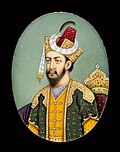
|
Humayun ہمایوں |
Nasir Ud-Din Baig Muhammad Khan ناصر الدین بیگ محمد خان |
6 March 1508 Kabul, Afghanistan | 26 December 1530 – 17 May 1540
22 February 1555 – 27 January 1556 |
27 January 1556 (aged 47) Delhi, India |
3 
|
Akbar اکبر |
Abu'l Fath Jalal Ud-Din Muhammad ابوالفتح جلال الدین محمد |
15 October 1542 Umerkot, Pakistan | 11 February 1556 – 27 October 1605 | 27 October 1605 (aged 63) Agra, India |
4 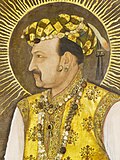
|
Jahangir جہانگیر |
Nur Ud-Din Baig Muhammad khan Salim نورالدین بیگ محمد خان سلیم |
31 August 1569 Agra, India | 3 November 1605 – 28 October 1627 | 28 October 1627 (aged 58) Jammu and Kashmir, India |
5 
|
Shah Jahan شاہ جہان |
Shahab Ud-Din Muhammad Khurram شہاب الدین محمد خرم |
5 January 1592 Lahore, Pakistan | 19 January 1628 – 31 July 1658 | 22 January 1666 (aged 74) Agra, India |
6 
|
Aurangzeb اورنگزیب Alamgir |
Muhi Ud-Din Muhammad محی الدین محمد |
3 November 1618 Gujarat, India | 31 July 1658 – 3 March 1707 | 3 March 1707 (aged 88) Ahmednagar, India |
7 
|
Azam Shah اعظم شاہ |
Qutb Ud-Din Muhammad قطب الدين محمد |
28 June 1653 Burhanpur, India | 14 March 1707 – 20 June 1707 | 20 June 1707 (aged 53) Agra, India |
8 
|
Bahadur Shah بہادر شاہ Shah Alam |
Abul-Nasr Sayyid Qutb-ud-din Mirza Muhammad Muazzam ابوالنصر سید قطب الدین مرزا محمد معظم |
14 October 1643 Burhanpur, India | 19 June 1707 – 27 February 1712 | 27 February 1712 (aged 68) Lahore, Pakistan |
9 
|
Jahandar Shah جہاندار شاہ |
Mu'izz-ud-Din Beg Muhammad Khan Bahādur معیز الدین بیگ محمد خان بہادر |
9 May 1661 Deccan, India | 27 February 1712 – 11 February 1713 | 12 February 1713 (aged 51) Delhi, India |
10
|
Farrukhsiyar فرخ سیر |
Abu'l Muzaffar Muīn-ud-Dīn Muhammad Shāh Farrukhsiyar Alim Akbar Sāni Wālā Shān Pādshāh-i-bahr-u-bar ابوالمظفر معین الدین محمد شاہ فرخ سیار علیم اکبر ثانی والا شان پادشاہ البحر البر Puppet King Under the Sayyids of Barha |
20 August 1685 Aurangabad, India | 11 January 1713 – 28 February 1719 | 19 April 1719 (aged 33) Delhi, India |
11
|
Rafi ud-Darajat رفیع الدرجات |
Abu'l Barakat Shams-ud-Din Muhammad Rafi ud-Darajat Padshah Ghazi Shahanshah-i-Bahr-u-Bar ابوالبرکات شمس الدین محمد رفیع الدراجات پادشاہ غازی شہنشاہ البحر البر Puppet King Under the Sayyids of Barha |
1 December 1699 | 28 February 1719 – 6 June 1719 | 6 June 1719 (aged 19) Agra, India |
12
|
Shah Jahan II شاہ جہان دوم |
Rafi-ud-Din Muhammad Rafi-ud-Daulah رفیع الدین محمد رفیع الدولہ Puppet King Under the Sayyids of Barha |
5 January 1696 | 6 June 1719 – 17 September 1719 | 18 September 1719 (aged 23) Agra, India |
13
|
Muhammad Shah محمد شاہ |
Nasir-ud-Din Muḥammad Shah Roshan Akhtar Bahadur Ghazi ناصر الدین محمد شاہ روشن اختر بہادر غازی Puppet King Under the Sayyids of Barha |
7 August 1702 Ghazni, Afghanistan | 27 September 1719 – 26 April 1748 | 26 April 1748 (aged 45) Delhi, India |
14
|
Ahmad Shah Bahadur احمد شاہ بہادر |
Abu-Nasir Mujahid ud-din Muhammad Ahmad Shah Bahadur Ghazi ابو ناصر مجاہد الدین محمد احمد شاہ بہادر غازی |
23 December 1725 Delhi, India | 29 April 1748 – 2 June 1754 | 1 January 1775 (aged 49) Delhi, India |
15
|
Alamgir II عالمگیر دوم |
Aziz Ud-Din Muhammad عزیز اُلدین محمد |
6 June 1699 Burhanpur, India | 3 June 1754 – 29 November 1759 | 29 November 1759 (aged 60) Kotla Fateh Shah, India |
16
|
Shah Jahan III شاہ جہان سوم |
Muhi Ul-Millat محی اُلملت |
1711 | 10 December 1759 – 10 October 1760 | 1772 (aged 60–61) |
17
|
Shah Alam II شاہ عالم دوم |
Abdu'llah Jalal ud-din Abu'l Muzaffar Ham ud-din Muhammad 'Mirza Ali Gauhar عبدالله جلال الدین ابوالمظفر هم الدین محمد میرزا علی گوهر شاه علم دوم |
25 June 1728 Delhi, India | 10 October 1760 – 31 July 1788 | 19 November 1806 (aged 78) Delhi, India |
18
|
Shah Jahan IV جہان شاه چہارم |
Bidar Bakht Mahmud Shah Bahadur Jahan Shah بیدار بخت محمود شاه بهادر جہان شاہ |
1749 Delhi, India | 31 July 1788 – 11 October 1788 | 1790 (aged 40–41) Delhi, India |
19
|
Shah Alam II شاہ عالم دوم |
Abdu'llah Jalal ud-din Abu'l Muzaffar Ham ud-din Muhammad 'Mirza Ali Gauhar عبدالله جلال الدین ابوالمظفر هم الدین محمد میرزا علی گوهر شاه علم دوم Puppet King under the Maratha Empire |
25 June 1728 Delhi, India | 16 October 1788 – 19 November 1806 | 19 November 1806 (aged 78) Delhi, India |
20
|
Akbar Shah II اکبر شاہ دوم |
Sultan Ibn Sultan Sahib al-Mufazi Wali Ni'mat Haqiqi Khudavand Mujazi Abu Nasir Mu'in al-Din Muhammad Akbar Shah Pad-Shah Ghazi سلطان ابن سلطان صاحب المفاضی ولی نعمت حقی خداوند مجازی ابو ناصر معین الدین محمد اکبر شاہ پاد شاہ غازی Puppet King under the East India Company |
22 April 1760 Mukundpur, India | 19 November 1806 – 28 September 1837 | 28 September 1837 (aged 77) Delhi, India |
21
|
Bahadur Shah II Zafar بہادر شاہ ظفر |
Abu Zafar Siraj Ud-Din Muhammad ابو ظفر سراج اُلدین محمد |
24 October 1775 Delhi, India | 28 September 1837 – 21 September 1857 | 7 November 1862 (aged 87) Rangoon, Myanmar |
List of title-holders Emperor of India
[edit]| Portrait | Name | Birth | Reign | Death | Consort | Imperial Durbar | Royal House |
|---|---|---|---|---|---|---|---|

|
Victoria | 24 May 1819 | 1 May 1876 – 22 January 1901 | 22 January 1901 | None[Note 1] | 1 January 1877 (represented by Lord Lytton) |
Hanover |
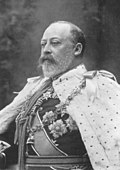
|
Edward VII | 9 November 1841 | 22 January 1901 – 6 May 1910 | 6 May 1910 | 
|
1 January 1903 (represented by Lord Curzon) |
Saxe-Coburg and Gotha |
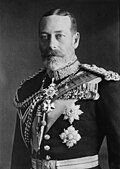
|
George V | 3 June 1865 | 6 May 1910 – 20 January 1936 | 20 January 1936 | 
|
12 December 1911 | Saxe-Coburg and Gotha (1910–1917) Windsor (1917–1936) |

|
Edward VIII | 23 June 1894 | 20 January 1936 – 11 December 1936 | 28 May 1972 | None | None[Note 2] | Windsor |
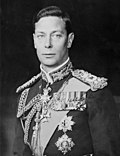
|
George VI | 14 December 1895 | 11 December 1936 – 15 August 1947 | 6 February 1952 | 
|
None[Note 3] | Windsor |
List of governors-general
[edit]Fort William (Bengal) and India, 1600–1857
[edit]| Governor-General (Lifespan) |
Term of office | Notable events | Appointed by | |
|---|---|---|---|---|
| Governors-General of the Presidency of Fort William (Bengal), 1773–1833 | ||||
 Warren Hastings (1732–1818) |
20 October 1773[Note 4] |
8 February 1785 |
|
George III |
 Sir John Macpherson, 1st Baronet (acting) (1745–1821) |
8 February 1785 |
12 September 1786 |
||
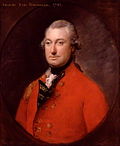 The Earl Cornwallis[Note 5] (1738–1805) |
12 September 1786 |
28 October 1793 |
| |
 John Shore (1751–1834) |
28 October 1793 |
18 March 1798 |
| |
 Lt. Gen Alured Clarke (acting) (1744–1832) |
18 March 1798 |
18 May 1798 |
||
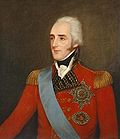 Richard Wellesley, 1st Marquess Wellesley[Note 6] (1760–1842) |
18 May 1798 |
30 July 1805 |
| |
 Charles Cornwallis, 1st Marquess Cornwallis (1738–1805) |
30 July 1805 |
5 October 1805 |
||
 George Barlow, 1st Baronet (acting) (1762–1847) |
10 October 1805 |
31 July 1807 |
| |
 Gilbert Elliot-Murray-Kynynmound, Lord Minto (1751–1814) |
31 July 1807 |
4 October 1813 |
| |
 Francis Rawdon-Hastings[Note 7] (1754–1826) |
4 October 1813 |
9 January 1823 |
| |
 John Adam (acting) (1779–1825) |
9 January 1823 |
1 August 1823 |
|
George IV |
 William Amherst, 1st Earl Amherst[Note 8] (1773–1857) |
1 August 1823 |
13 March 1828 |
| |
 William Butterworth Bayley (acting) (1782–1860) |
13 March 1828 |
4 July 1828 |
||
| Governors-General of India, 1833–1858 | ||||
 Lord William Bentinck (1774–1839) |
4 July 1828 |
20 March 1835 |
|
William IV |
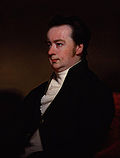 Charles Metcalfe, Baronet (acting) (1785–1846) |
20 March 1835 |
4 March 1836 |
| |
 George Eden, 1st Earl of Auckland[Note 9] (1784–1849) |
4 March 1836 |
28 February 1842 |
| |
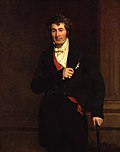 Edward Law, Lord Ellenborough (1790–1871) |
28 February 1842 |
June 1844 |
|
Victoria |
 William Wilberforce Bird (acting) (1784–1857) |
June 1844 |
23 July 1844 |
||
 Henry Hardinge[Note 10] (1785–1856) |
23 July 1844 |
12 January 1848 |
| |
 James Broun-Ramsay, Earl of Dalhousie[Note 11] (1812–1860) |
12 January 1848 |
28 February 1856 |
| |
 Charles Canning, Viscount Canning[Note 12] (1812–1862) |
28 February 1856 |
31 October 1858 |
| |
Governors-General and Viceroys of India, 1858–1947
[edit]| Governor-General or Viceroy (Lifespan) |
Term of office | Notable events | Secretary of State for India | Prime Minister | |
|---|---|---|---|---|---|
| Governors-General and Viceroys of India, 1858–1947 | |||||
 Charles Canning, Viscount Canning[Note 12] (1812–1862) |
1 November 1858 |
21 March 1862 |
|
||
 James Bruce, 8th Earl of Elgin (1811–1863) |
21 March 1862 |
20 November 1863 |
|
Charles Wood | Viscount Palmerston |
 Robert Napier (acting) (1810–1890) |
21 November 1863 |
2 December 1863 |
|||
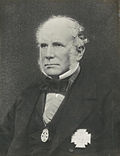 William Denison (acting) (1804–1871) |
2 December 1863 |
12 January 1864 |
|||
 John Lawrence, Baronet (1811–1879) |
12 January 1864 |
12 January 1869 |
|
||
 Richard Bourke, 6th Earl of Mayo (1822–1872) |
12 January 1869 |
8 February 1872 |
|
George Campbell, 8th Duke of Argyll | William Ewart Gladstone |
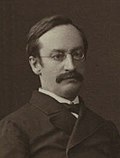 John Strachey (acting) (1823–1907) |
9 February 1872 |
23 February 1872 |
|||
 Francis Napier, 10th Lord Napier (acting) (1819–1898) |
24 February 1872 |
3 May 1872 |
|||
 Thomas Baring, Lord Northbrook (1826–1904) |
3 May 1872 |
12 April 1876 |
|
||
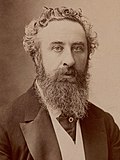 Robert Bulwer-Lytton, 1st Earl of Lytton (1831–1891) |
12 April 1876 |
8 June 1880 |
|
||
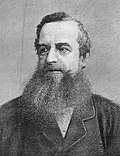 George Robinson, 1st Marquess of Ripon (1827–1909) |
8 June 1880 |
13 December 1884 |
|
||
 Frederick Hamilton-Temple-Blackwood, Earl of Dufferin (1826–1902) |
13 December 1884 |
10 December 1888 |
|
||
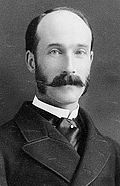 Henry Petty-Fitzmaurice, 5th Marquess of Lansdowne (1845–1927) |
10 December 1888 |
21 January 1894 |
|
||
 Victor Bruce, 9th Earl of Elgin (1849–1917) |
21 January 1894[25] |
6 January 1899 |
|
||
 George Curzon, 1st Marquess Curzon of Kedleston[Note 13] (1859–1925) |
6 January 1899 |
18 November 1905 |
|
||
 Gilbert Elliot-Murray-Kynynmound, 4th Earl of Minto (1845–1914) |
18 November 1905 |
23 November 1910 |
|
||
 Charles Hardinge, 1st Baron Hardinge of Penshurst (1858–1944) |
23 November 1910 |
4 April 1916 |
|
||
 Frederic Thesiger, 1st Viscount Chelmsford (1868–1933) |
4 April 1916 |
2 April 1921 |
|
||
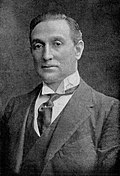 Rufus Isaacs, 1st Marquess of Reading (1860–1935) |
2 April 1921 |
3 April 1926 |
|
||
 E. F. L. Wood, Lord Irwin (1881–1959) |
3 April 1926 |
18 April 1931 |
|
||
 George Goschen, 2nd Viscount Goschen (acting) (1866–1952) |
29 June 1929 |
11 November 1929 | |||
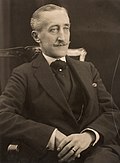 Freeman Freeman-Thomas, Earl of Willingdon (1866–1941) |
18 April 1931 |
18 April 1936 |
|
||
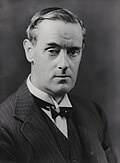 Victor Hope, 2nd Marquess of Linlithgow (1887–1952) |
18 April 1936 |
1 October 1943 |
|
||
 Archibald Wavell, Viscount Wavell (1883–1950) |
1 October 1943 |
21 February 1947 |
|
||
 Louis Mountbatten, Viscount Mountbatten of Burma (1900–1979) |
21 February 1947 |
15 August 1947 |
|
||
Governors-General of the Dominion of India, 1947–1950
[edit]| Governor-General (Lifespan) |
Term of office | Notable events | Prime Minister | |
|---|---|---|---|---|
| Governors-General of the Dominion of India, 1947–1950 | ||||
 Louis Mountbatten, Viscount Mountbatten of Burma[Note 14] (1900–1979) |
15 August 1947 |
21 June 1948 |
|
|
 Chakravarti Rajagopalachari (1878–1972) |
21 June 1948 |
26 January 1950 |
| |
President of India
[edit]| # | President (birth–death) |
Portrait | Tenure | Elected | Political affiliation
(at time of appointment) |
Vice president | |
|---|---|---|---|---|---|---|---|
| Took office | Left office | ||||||
| 1 | Rajendra Prasad (1884–1963) |

|
26 January 1950 | 13 May 1962 | 1952 1957 |
Indian National Congress | Sarvepalli Radhakrishnan |
| 2 | Sir Sarvepalli Radhakrishnan (1888–1975) |

|
13 May 1962 | 13 May 1967 | 1962 | Independent | Zakir Husain |
| 3 | Zakir Husain (1897–1969) |

|
13 May 1967 | 3 May 1969 (died in office.) |
1967 | Independent | V. V. Giri |
| 4 | V. V. Giri (1894–1980) |

|
3 May 1969 | 20 July 1969 | 1969 | Independent | |
| 5 | Mohammad Hidayatullah (1905–1992) |

|
20 July 1969 | 24 August 1969 | 1969 | Independent | |
| (4) | V. V. Giri (1894–1980) |

|
24 August 1969 | 24 August 1973 | 1969 | Independent | Gopal Swarup Pathak |
| – | Gopal Swarup Pathak (1896–1982) |
24 August 1973 | 24 August 1973 | – | Independent | Gopal Swarup Pathak | |
| (4) | V. V. Giri
(1894–1980) |

|
24 August 1973 | 24 August 1974 | – | Independent | Gopal Swarup Pathak |
| 6 | Fakhruddin Ali Ahmed (1905–1977) |

|
24 August 1974 | 11 February 1977 (died in office.) |
1974 | Indian National Congress | Gopal Swarup Pathak
B. D. Jatti |
| 7 | B. D. Jatti (1912–2002) |

|
11 February 1977 | 25 July 1977 |
— | Indian National Congress | B. D. Jatti |
| 8 | Neelam Sanjiva Reddy (1913–1996) |

|
25 July 1977 | 25 July 1982 | 1977 | Janata Party | B. D. Jatti
Mohammad Hidayatullah |
| 9 | Giani Zail Singh (1916–1994) |

|
25 July 1982 | 25 July 1983 | 1982 | Indian National Congress | Mohammad Hidayatullah |
| (5) | Mohammad Hidayatullah (1905–1992) |

|
25 July 1983 | 25 July 1983 | — | Indian National Congress | |
| (9) | Giani Zail Singh (1916–1994) |

|
25 July 1983 | 25 July 1984 | — | Indian National Congress | |
| (5) | Mohammad Hidayatullah (1905–1992) |

|
25 July 1984 | 25 July 1984 | — | Indian National Congress | |
| (9) | Giani Zail Singh (1916–1994) |

|
25 July 1984 | 25 July 1987 | — | Indian National Congress | Ramaswamy Venkataraman |
| 10 | R. Venkataraman (1910–2009) |

|
25 July 1987 | 25 July 1992 | 1987 | Indian National Congress | Shankar Dayal Sharma |
| 11 | Shankar Dayal Sharma (1918–1999) |

|
25 July 1992 | 25 July 1997 | 1992 | Indian National Congress | K. R. Narayanan |
| 12 | K. R. Narayanan (1920–2005) |

|
25 July 1997 | 25 July 2000 | 1997 | Indian National Congress | Krishan Kant |
| – | Krishan Kant
(1927–2002) |
25 July 2000 | 25 July 2000 | – | Indian National Congress | Krishan Kant | |
| (12) | K. R. Narayanan
(1920–2005) |

|
25 July 2000 | 25 July 2002 | – | Indian National Congress | Krishan Kant |
| 13 | A. P. J. Abdul Kalam (1931–2015) |

|
25 July 2002 | 25 July 2003 | 2002 | Independent | Krishan Kant |
| – | Bhairon Singh Shekhawat
(1923–2010) |
25 July 2003 | 25 July 2003 | – | Independent | Bhairon Singh Shekhawat | |
| (13) | A. P. J. Abdul Kalam
(1931–2015) |

|
25 July 2003 | 25 July 2007 | – | Independent | Bhairon Singh Shekhawat |
| 14 | Pratibha Patil (1934–) |

|
25 July 2007 | 25 July 2010 | 2007 | Indian National Congress | Mohammad Hamid Ansari |
| – | Mohammad Hamid Ansari(1937–) | 25 July 2010 | 25 July 2010 | – | Indian National Congress | ||
| (14) | Pratibha Patil
(1934–) |

|
25 July 2010 | 25 July 2012 | – | Indian National Congress | |
| 15 | Pranab Mukherjee (1935–2020) |

|
25 July 2012 | 25 July 2016 | 2012 | Indian National Congress | |
| – | Mohammad Hamid Ansari(1937–) | 25 July 2016 | 25 July 2016 | – | Indian National Congress | Mohammad Hamid Ansari | |
| (15) | Pranab Mukherjee
(1935–2020) |

|
25 July 2016 | 25 July 2017 | – | Indian National Congress | Mohammad Hamid Ansari |
| 16 | Ram Nath Kovind (1945–) |

|
25 July 2017 | 25 July 2018 | 2017 | Bharatiya Janata Party | Mohammad Hamid Ansari |
| _ | M. Venkaiah Naidu
(1949–) |
25 July 2018 | 25 July 2018 | – | Bharatiya Janata Party | Venkaiah Naidu | |
| (16) | Ram Nath Kovind
(1945–) |

|
25 July 2018 | 25 July 2022 | – | Bharatiya Janata Party | Venkaiah Naidu |
| 17 | Droupadi Murmu (1958-) |

|
25 July 2022 | 11 August 2022 | 2022 | Bharatiya Janata Party | Venkaiah Naidu |
| – | Jagdeep Dhankhar
(1951–) |
11 August 2022 | 11 August 2022 | – | Bharatiya Janata Party | Jagdeep Dhankhar | |
| 17 | Droupadi Murmu (1958-) |

|
11 August 2022 | Incumbent | – | Bharatiya Janata Party | Jagdeep Dhankhar |
List of vice presidents of India
[edit]- Key
†-Died in office
⸸-Resigned
| # | Portrait | Name | Term of office[28] | Election | President | Party | |||
|---|---|---|---|---|---|---|---|---|---|
| 1 | 
|
Sarvepalli Radhakrishnan | 13 May 1952 | 12 May 1957 | 9 years, 364 days | 1952 | Rajendra Prasad | Independent | |
| 13 May 1957 | 12 May 1962 | 1957 | |||||||
| 2 | 
|
Zakir Husain | 13 May 1962 | 12 May 1967 | 4 years, 364 days | 1962 | Sarvepalli Radhakrishnan | ||
| 3 | 
|
V. V. Giri ⸸ | 13 May 1967 | 3 May 1969 | 1 year, 355 days | 1967 | Zakir Hussain | ||
| 4 | Gopal Swarup Pathak | 31 August 1969 | 30 August 1974 | 4 years, 364 days | 1969 | V. V. Giri
| |||
| 5 | 
|
B. D. Jatti | 31 August 1974 | 30 August 1979 | 4 years, 364 days | 1974 | Fakhruddin Ali Ahmed
|
Indian National Congress | |
| 6 | 
|
Mohammad Hidayatullah | 31 August 1979 | 30 August 1984 | 4 years, 365 days | 1979 | Neelam Sanjiva Reddy
|
Independent | |
| 7 | 
|
Ramaswamy Venkataraman ⸸ | 31 August 1984 | 24 July 1987 | 2 years, 327 days | 1984 | Zail Singh | Indian National Congress | |
| 8 | 
|
Shankar Dayal Sharma ⸸ | 3 September 1987 | 24 July 1992 | 4 years, 325 days | 1987 | Ramaswamy Venkataraman | ||
| 9 | 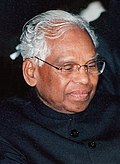
|
K. R. Narayanan ⸸ | 21 August 1992 | 24 July 1997 | 4 years, 337 days | 1992 | Shankar Dayal Sharma | ||
| 10 | 
|
Krishan Kant† | 21 August 1997 | 27 July 2002 | 4 years, 340 days | 1997 | K. R. Narayanan
|
Janata Dal | |
| 11 | 
|
Bhairon Singh Shekhawat ⸸ | 19 August 2002 | 21 July 2007 | 4 years, 336 days | 2002 | A. P. J. Abdul Kalam | Bharatiya Janata Party | |
| 12 | 
|
Mohammad Hamid Ansari | 11 August 2007 | 10 August 2012 | 9 years, 364 days | 2007 | Pratibha Patil | Indian National Congress | |
| 11 August 2012 | 10 August 2017 | 2012 | Pranab Mukherjee
| ||||||
| 13 | 
|
Venkaiah Naidu | 11 August 2017 | 11 August 2022 | 5 years, 0 days | 2017 | Ram Nath Kovind
|
Bharatiya Janata Party | |
| 14 | 
|
Jagdeep Dhankhar | 11 August 2022 | Incumbent | 2 years, 303 days | 2022 | Droupadi Murmu | Bharatiya Janata Party | |
List of presidents of the Board of Control
[edit]Edward Stanley, 15th Earl of Derby took up the new post of Secretary of State for India on 2 August 1858, upon the establishment of the British Raj.
Secretaries of state for India, 1858–1948
[edit]| Portrait | Name | Term of office | Political party | Prime Minister | |||
|---|---|---|---|---|---|---|---|

|
Lord Stanley MP for King's Lynn |
2 August 1858 |
11 June 1859 |
Conservative | Edward Smith-Stanley, 14th Earl of Derby | ||

|
Sir Charles Wood MP for Halifax until 1865 MP for Ripon after 1865 |
18 June 1859 |
16 February 1866[31] |
Liberal | Henry John Temple, 3rd Viscount Palmerston | ||
| John Russell, 1st Earl Russell | |||||||

|
George Robinson, 3rd Earl de Grey | 16 February 1866 |
26 June 1866 |
Liberal | |||

|
Robert Gascoyne-Cecil, Viscount Cranborne MP for Stamford |
6 July 1866 |
8 March 1867 |
Conservative | Edward Smith-Stanley, 14th Earl of Derby | ||
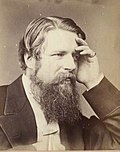
|
Sir Stafford Northcote MP for North Devonshire |
8 March 1867 |
1 December 1868 |
Conservative | |||
| Benjamin Disraeli | |||||||

|
George Campbell, 8th Duke of Argyll | 9 December 1868 |
17 February 1874 |
Liberal | William Ewart Gladstone | ||

|
Robert Gascoyne-Cecil, 3rd Marquess of Salisbury | 21 February 1874 |
2 April 1878 |
Conservative | Benjamin Disraeli | ||

|
Gathorne Gathorne-Hardy, 1st Viscount Cranbrook |
2 April 1878 |
21 April 1880 |
Conservative | |||

|
Spencer Cavendish, Marquess of Hartington MP for North East Lancashire |
28 April 1880 |
16 December 1882 |
Liberal | William Ewart Gladstone | ||

|
John Wodehouse, 1st Earl of Kimberley | 16 December 1882 |
9 June 1885 |
Liberal | |||

|
Lord Randolph Churchill MP for Paddington South |
24 June 1885 |
28 January 1886 |
Conservative | Robert Gascoyne-Cecil, 3rd Marquess of Salisbury | ||

|
John Wodehouse, 1st Earl of Kimberley | 6 February 1886 |
20 July 1886 |
Liberal | William Ewart Gladstone | ||

|
R. A. Cross, 1st Viscount Cross | 3 August 1886 |
11 August 1892 |
Conservative | Robert Gascoyne-Cecil, 3rd Marquess of Salisbury | ||

|
John Wodehouse, 1st Earl of Kimberley | 18 August 1892 |
10 March 1894 |
Liberal | William Ewart Gladstone | ||

|
Henry Fowler MP for Wolverhampton East |
10 March 1894 |
21 June 1895 |
Liberal | Archibald Primrose, 5th Earl of Rosebery | ||

|
Lord George Hamilton MP for Ealing |
4 July 1895 |
9 October 1903[32] |
Conservative | Robert Gascoyne-Cecil, 3rd Marquess of Salisbury (Unionist Coalition) | ||
| Arthur Balfour (Unionist Coalition) | |||||||
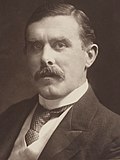
|
William St John Brodrick MP for Guildford |
9 October 1903 |
4 December 1905 |
Irish Unionist | |||

|
John Morley MP for Montrose Burghs until 1908 Viscount Morley of Blackburn after 1908 |
10 December 1905 |
3 November 1910 |
Liberal | Sir Henry Campbell-Bannerman | ||
| H. H. Asquith | |||||||

|
Robert Crewe-Milnes, 1st Earl of Crewe | 3 November 1910 |
7 March 1911 |
Liberal | |||

|
John Morley, 1st Viscount Morley of Blackburn | 7 March 1911 |
25 May 1911 |
Liberal | |||

|
Robert Crewe-Milnes, 1st Marquess of Crewe | 25 May 1911 |
25 May 1915 |
Liberal | |||

|
Austen Chamberlain MP for Birmingham West |
25 May 1915 |
17 July 1917[33] |
Conservative | H. H. Asquith (Coalition) | ||

|
Edwin Montagu MP for Chesterton until 1918 MP for Cambridgeshire after 1918 |
17 July 1917 |
19 March 1922 |
Liberal | |||

|
William Peel, 2nd Viscount Peel | 19 March 1922 |
22 January 1924 |
Conservative | Bonar Law | ||
| Stanley Baldwin | |||||||

|
Sydney Olivier, 1st Baron Olivier | 22 January 1924 |
3 November 1924 |
Labour | Ramsay MacDonald | ||

|
F. E. Smith, 1st Earl of Birkenhead | 6 November 1924 |
18 October 1928 |
Conservative | Stanley Baldwin | ||

|
William Peel, 2nd Viscount Peel | 18 October 1928 |
4 June 1929 |
Conservative | |||

|
William Wedgwood Benn MP for Aberdeen North |
7 June 1929 |
24 August 1931 |
Labour | Ramsay MacDonald | ||

|
Sir Samuel Hoare MP for Chelsea |
25 August 1931 |
7 June 1935 |
Conservative | Ramsay MacDonald (1st & 2nd National Min.) | ||
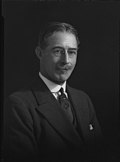
|
Lawrence Dundas, 2nd Marquess of Zetland | 7 June 1935 |
28 May 1937 |
Conservative | Stanley Baldwin (3rd National Min.) | ||
Secretaries of state for India and Burma, 1937–1947
[edit]| Portrait | Name | Term of office | Political party | Prime Minister | |||
|---|---|---|---|---|---|---|---|

|
Lawrence Dundas, 2nd Marquess of Zetland | 28 May 1937 |
13 May 1940 |
Conservative | Neville Chamberlain (4th National Min.; War Coalition) | ||

|
Leo Amery MP for Birmingham Sparkbrook |
13 May 1940 |
26 July 1945 |
Conservative | Winston Churchill (War Coalition; Caretaker Min.) | ||

|
Frederick Pethick-Lawrence, 1st Baron Pethick-Lawrence | 3 August 1945 |
17 April 1947 |
Labour | Clement Attlee | ||
| The Right Honourable William Hare, 5th Earl of Listowel |
17 April 1947 |
14 August 1947 |
Labour | ||||
Secretaries of state for Burma, 1947–1948
[edit]| Portrait | Name | Term of office | Political party | Prime Minister | |||
|---|---|---|---|---|---|---|---|
| The Right Honourable William Hare, 5th Earl of Listowel |
14 August 1947 |
4 January 1948 |
Labour | Clement Attlee | |||
Vakil-i-Mutlaq
[edit]| Vakil of the Mughal Empire | |
|---|---|
| Style | His Excellency |
| Residence | House of Rule |
| Appointer | The Emperor |
| Formation | 21 April 1526 |
| First holder | Mir Khalifa |
| Final holder | Daulat Rao Sindhia |
| Abolished | 9 April 1818 |
The Vakil-i-Mutlaq (Persian: وکیلِ مطلق), variously translated as the Lieutenant Plenipotentiary,[34] the Regent Plenipotentiary,[35] the Vicegerent[36] or the Imperial Regent, was an important office in the Government of the Mughal Empire, first in ministerial hierarchy and only next to Mughal Emperor. Vekil is an Arabic word which means "representative".[37] The Vakil was considered as the Emperor's lieutenant in all matters connected with the realm and household. From the reign of Emperor Babur to Emperor Shah Jahan, the title of grand vizier was also given to the Vakil. But afterwards it remained only as dignitary post.[38]
The degree of powers of the Vakil's office varied from era to era. However the Vakil required Emperor's approval in each and every decision. During the era of Babur and Humayun, he had the powers of prime minister while early in the reign of Akbar, Vakil Bairam Khan acted as regent and ruled on the behalf of Emperor. Bairam Khan had his own Vakil-i-Mutlaq, who in this case was a general manager. This position was held by Pir Muhammad Khan Shirwani and when he was temporarily dismissed, given to Haji Muhammad Sistani.[39] In 1564, Akbar revived the office of Vakil and didn't give him the responsibilities of finance department.[40] In the reign of Jahangir, the office of Imperial Diwan gained prominence and ultimately during Shah Jahan's regime, the title of grand vizier was transferred from Vakil's office to Imperial Diwan.[40]
List of prime ministers of India
[edit]| N | Portrait | Name | Term of office | Notable events | Emperor | |
|---|---|---|---|---|---|---|
| 1 | Amir Nizamuddin Khalifa | 1526 | 1540 | 1st Battle of panipat | Babur (1526 – 1530)
& Humayun (1530 – 1540) | |
| 2 | Qaracha Khan | 1540 | 1550 | He was a governor of qandhar and humayun appoint him as Grand-Vizier of the Mughal State. | Humayun (1530 – 1556) | |
| 3 | Bairam Khan[41] | 1550 | 1560 | Akbar-i-Azam اکبر اعظم (1556-1605) | ||
| 4 | Munim Khan | 1560 | 1565 | |||
| 5 | Muzaffar Khan Turbati[42] | 1575 | 1579 | No Vakil was appointed after his appointment to governorship in Bengal from 1579 until 1589 | ||
| 6 | 
|
Abu'l-Fazl ibn Mubarak[43] | 1579 | 1602 | ||
| 7 | Khanzada Abdur Rahim[41] | 1589 | 1595 | |||
| 8 | 
|
Mirza Aziz Koka[41] | 1595 | 1605 | ||
| 9 | Sharif Khan[41] | 1605 | 1611 | Jahangir جہانگیر (1605-1627) | ||
| 10 | 
|
Mirza Ghias Beg[41] | 1611 | 1622 | ||
| 11 | 
|
Abu'l-Hasan Asaf Khan[41] | 1622 | 1630 | ||
| 12 | Afzal Khan Shirazi[41] | 1630 | 1639 | Shah Jahan شاہ جہان (1628-1658) | ||
| 13 | Islam Khan Mashadi[41] | 1639 | 1640 | |||
| 14 | Shaikh Ilam-ud-Din Ansari[44] | 1640 | 1642 | |||
| 15 | 
|
Sadullah Khan[45] | 1642 | 1656 |
| |
| 16 | 
|
Mir Jumla[46] | 1656 | 1657 | Alamgir I عالمگیر (1658-1707) | |
| 17 | Jafar Khan[47] | 1657 | 1658 | |||
| 18 | Fazil Khan[48] | 1658 | 1663 | |||
| (17) | Jafar Khan[49] | 1663 | 1670 [50] | |||
| 19 | Asad Khan[51] | 1675 | 1707 | |||
| 20 | Mun'im Khan[52] | 1707 | 1711 | Bahadur Shah I بہادر شاہ (1707-1712) | ||
| 21 | Hidayatullah Khan[53] | 1711 | 1713 | Jahandar Shah جہاندار شاہ (1712-1713) | ||
| 22 | Zulfiqar Khan Nusrat Jung[54] | 1712 | 1713 | |||
| 23 | Mir Rustam Ali Khan[41] | 1710 | 1737 | Farrukhsiyar فرخ سیر (1713–1719) | ||
| 24 | 
|
Sayyid Hassan Ali Khan Barha[55] | 1713 | 1720 |
| |
| 25 | 
|
Muhammad Amin Khan Turani[57] | 1720 | 1721 | Muhammad Shah محمد شاہ (1719-1748) | |
| 26 | 
|
Mir Qamar-ud-Din Khan Asaf Jah I[58] | 1721 | 1724 | ||
| 27 | 
|
Mir Fazil Qamar-ud-Din Khan | 1724 | 1731 | ||
| 28 | 
|
Saadat Ali Khan I | 1731 | 19 March 1739 | ||
| (27) | 
|
Mir Fazil Qamar-ud-Din Khan | 19 March 1739 | 1748 | ||
| 29 | 
|
Safdar Jang[59] | 1748 | 1753 | Ahmad Shah Bahadur احمد شاہ بہادر (1748-1754) | |
| 30 | Intizam-ud-Daulah[60] | 1753 | 1754 | |||
| 31 | 
|
Muhammad Muqim | 1 October 1754 | 5 October 1754 | ||
| 32 | 
|
Imad-ul-Mulk Feroze Jung[61] | 1754 | 1760 | Alamgir II عالمگیر دوم (1754-1759) | |
| 33 | 
|
1760 | 1775 | Shah Alam II شاہ عالم دوم (1760-1806) | ||
| 34 | Mirza Jawan Bakht | 1760 | 1775 | |||
| 35 | 
|
Asaf-ud-Daula | 1775 | 1784 | ||
| (34) | Mirza Jawan Bakht | 1784 | 1784 | |||
| (35) | 
|
Asaf-ud-Daula | 1784 | 1797 | ||
| 36 | 
|
Wazir Ali Khan | 21 September 1797 | 21 January 1798 | ||
List of Prime Minister
[edit]| N | Portrait | Personal Name | Reign | Birth | Death |
|---|---|---|---|---|---|
| (36) | 
|
Wazir Ali Khanوزیر علی خان | 21 September 1797 – 21 January 1798 | 1780 | 1817 |
| 37 | 
|
Saadat Ali Khan IIسعادت علی خان | 21 January 1798 – 11 July 1814 | 1752 | 1814 |
| 38 | 
|
Ghazi-ud-Din Haidar Shahغازی الدیں حیدر شاہ | 11 July 1814 – 19 October 1827 | 1769 | 1827 |
| 39 | 
|
Nasir-ud-Din Haidar Shahناصر الدیں حیدر شاہ | 19 October 1827 – 7 July 1837 | 1827 | 1837 |
| 40 | 
|
Muhammad Ali Shahمحمّد علی شاہ | 7 July 1837 – 7 May 1842 | 1777 | 1842 |
| 42 | 
|
Amjad Ali Shahامجد علی شاہ | 7 May 1842 – 13 February 1847 | 1801 | 1847 |
| 43 | 
|
Wajid Ali Shahواجد علی شاہ | 13 February 1847 – 11 February 1856 | 1822 | 1 September 1887 |
| 44 | 
|
Begum hazrat Mahalبیگم حضرت محل | 11 February 1856 – 5 July1857
Wife of Wajid Ali Shah and mother of Birjis Qadra (in rebellion) |
1820 | 7 April 1879 |
| 45 | 
|
Birjis Qadrبر جیس قدر | 5 July 1857 – 3 March 1858
(in rebellion) |
1845 | 14 August 1893 |
List of Prime Minister
[edit]| N | Portrait | Birth Name | Reign | Birth | Death | Notes |
|---|---|---|---|---|---|---|
| 46 | 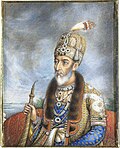
|
Abu Zafar Siraj al-Din Muhammad |
3 March 1858 – 7 November 1862
(19 years, 360 days) |
24 October 1775 Delhi, India | 7 November 1862 (aged 87) Rangoon, Myanmar | Last Mughal Emperor. Deposed by the British and was exiled to Burma after the rebellion of 1857. |
List of prime ministers of India
[edit]| No. | Portrait | Name (birth and death) |
Term of office | Party | |
|---|---|---|---|---|---|
| Took office | Left office | ||||
| 47 | Charles Wood | 1862 | 1862 | Independent | |
| 48 | Jung Bahadur Rana | 1862 | 1862 | ||
| 49 | Dost Mohammad Khan | 1862 | 1862 | ||
| 50 | Jyotirao Phule | 1862 | 1863 | ||
| 51 | James Bruce | 1863 | 1863 | ||
| 52 | Dayananda Saraswati | 1863 | 1863 | ||
| 53 | Ramakrishna | 1863 | 1863 | ||
| 54 | Sher Ali Khan | 1863 | 1863 | ||
| 55 | Takht Singh | 1863 | 1863 | ||
| 56 | John Lawrence | 1863 | 1863 | ||
| 57 | Debendranath Tagore | 1863 | 1870 | ||
| 58 | Syed Ahmad Khan | 1870 | 1875 | ||
| 59 | Mohsin-ul-Mulk | 1875 | 1880 | ||
| 60 | Mir Turab Ali Khan, Salar Jung I | 1880 | 1883 | ||
| 61 | Ranodip Singh Kunwar | 1883 | 1883 | ||
| 62 | Mir Laiq Ali Khan, Salar Jung II | 1883 | 1883 | ||
| 63 | Keshub Chandra Sen | 1883 | 1883 | ||
| 64 | Herbert Spencer | 1884 | 1885 | ||
| 65 | Bhikaiji Cama | 1885 | 1885 | ||
| 66 | Abhayananda | 1885 | 1885 | ||
| 67 | Jaswant Singh II | 1885 | 1885 | ||
| 68 | John Wodehouse | 1885 | 1885 | ||
| 69 | Frederick Hamilton | 1885 | 1885 | ||
List of prime ministers of India
[edit]- Legend
List of prime ministers of India
[edit]| No. | Portrait | Name (birth and death) |
Term of office | Party | |
|---|---|---|---|---|---|
| Took office | Left office | ||||
| 100 | Raja Mahendra Pratap
(1 December 1886 – 29 April 1979) |
1915 | 1919 | Independent | |
| 101 | Abdul Hafiz Mohamed Barakatullah
(7 July 1854 – 20 September 1927) |
1919 | 1919 | Independent | |
| 102 | Hari Singh Gour
(26 November 1870 – 25 December 1949) |
1919 | 1923 | Independent | |
| 103 | Motilal Nehru
(6 May 1861 – 6 February 1931) |
1923 | 1930 | Independent | |
| 104 | Jawaharlal Nehru
(1889 –1964) |
1930 | 1932 | Independent | |
| – | Hari Singh Gour
(26 November 1870 – 25 December 1949) |
1932 | 1934 | Independent | |
| 105 | Bhulabhai Desai
(13 October 1877 – 6 May 1946) |
1934 | 1936 | Independent | |
| 106 | Abul Kalam Azad
( 11 November 1888 – 22 February 1958) |
1936 | 1943 | Independent | |
| 107 | Mahatma Gandhi
(2 October 1869 – 30 January 1948) |
1 July 1943 | 6 July 1943 | Independent | |
| 108 | Vallabhbhai Patel
( 31 October 1875 – 15 December 1950) |
6 July 1943 | 6 July 1943 | Independent | |
| 119 | Muhammad Ali Jinnah
(25 December 1876 – 11 September 1948) |
6 July 1943 | 6 July 1943 | Independent | |
| 110 | Liaquat Ali Khan
(1 October 1895 – 16 October 1951) |
6 July 1943 | 6 July 1943 | Independent | |
| 111 | 
|
Subhash Chandra Bose (1897- 1945) |
6 July 1943 | 18 August 1945 | Indian National Army |
| 112 | Jawaharlal Nehru
(1889- 1964) |
18 August 1945 | 15 August 1947 | Indian National Congress | |
| - | After Independence (below) | ||||
| 1 | 
|
Jawaharlal Nehru (1889–1964) |
15 August 1947 | 15 April 1952 | Indian National Congress |
| 15 April 1952 | 17 April 1957 | ||||
| 17 April 1957 | 2 April 1962 | ||||
| 2 April 1962 | 27 May 1964† | ||||
| Acting | 
|
Gulzarilal Nanda (1898–1998) |
27 May 1964 | 9 June 1964 | |
| 2 | 
|
Lal Bahadur Shastri (1904–1966) |
9 June 1964 | 11 January 1966† | |
| – | 
|
Gulzarilal Nanda (1898–1998) |
11 January 1966 | 24 January 1966 | |
| 3 | 
|
Indira Gandhi (1917–1984) |
24 January 1966 | 4 March 1967 | |
| 4 March 1967 | 15 March 1971 | ||||
| 15 March 1971 | 24 March 1977 | ||||
| 4 | 
|
Morarji Desai (1896–1995) |
24 March 1977 | 28 July 1979 | Janata Party |
| Acting | Jagjivan Ram
(1908–1986) |
28 July 1979 | 28 July 1979 | ||
| 5 | 
|
Charan Singh (1902–1987) |
28 July 1979 | 8 January 1980[RES] | Janata Party (Secular) |
| Acting | Yashwantrao Chavan
(1913–1984) |
8 January 1980 | 10 January 1980 | ||
| 6 | 
|
Charan Singh
(1902–1987) |
10 January 1980 | 14 January 1980 | |
| 7 | 
|
Indira Gandhi (1917–1984) |
14 January 1980[§] | 31 October 1984† | Indian National Congress (I) |
| 8 | Rajiv Gandhi (1944–1991) |
31 October 1984 | 31 December 1984 | ||
| 31 December 1984 | 2 December 1989 | ||||
| 9 | 
|
Vishwanath Pratap Singh (1931–2008) |
2 December 1989 | 10 November 1990[NC] | Janata Dal (National Front) |
| Acting | Devi Lal
(1915–2001) |
10 November 1990 | 10 November 1990 | Samajwadi Janata Party (Rashtriya) | |
| 10 | 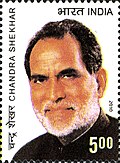
|
Chandra Shekhar (1927–2007) |
10 November 1990 | 21 June 1991[RES] | |
| 11 | 
|
P. V. Narasimha Rao (1921–2004) |
21 June 1991 | 16 May 1996 | Indian National Congress (I) |
| 12 | 
|
Atal Bihari Vajpayee (1924–2018) |
16 May 1996 | 1 June 1996[RES] | Bharatiya Janata Party |
| 13 | 
|
H. D. Deve Gowda (born 1933) |
1 June 1996 | 21 April 1997[RES] | Janata Dal (United Front) |
| 14 | 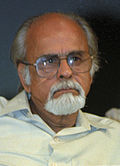
|
Inder Kumar Gujral (1919–2012) |
21 April 1997 | 19 March 1998[RES] | |
| 15 | 
|
Atal Bihari Vajpayee (1924–2018) |
19 March 1998[§] | 13 October 1999[NC] | Bharatiya Janata Party (NDA) |
| 13 October 1999 | 22 May 2002 | ||||
| Acting | Lal Krishna Advani
(1927–) |
22 May 2002 | 22 May 2002 | ||
| 16 | 
|
Atal Bihari Vajpayee
(1924–2018) |
22 May 2002 | 22 May 2004 | |
| Acting | 
|
Sonia Gandhi(1946 –) | 22 May 2004 | 22 May 2004 | Indian National Congress (UPA) |
| 17 | 
|
Manmohan Singh (1932- 2024) |
22 May 2004 | 22 May 2009 | |
| 22 May 2009 | 26 May 2014 | ||||
| 18 | 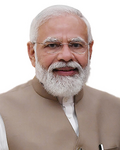
|
Narendra Modi (born 1950) |
26 May 2014 | 30 May 2019 | Bharatiya Janata Party (NDA) |
| 30 May 2019
9 Jun 2024 |
9 Jun 2024
Incumbent | ||||
List of governors of Portuguese India
[edit]The following is a list of rulers during the history of Portuguese India as a viceroyalty or governorship.[62]
| Title | Name | Took office | Left office | Notes |
|---|---|---|---|---|
| Viceroy (nom.) |
D. Tristão da Cunha | – | – | First to be nominated viceroy, but was unable to assume office |
| Viceroy | D. Francisco de Almeida | 12 September 1505 | November 1509 | First governor and first viceroy of Portuguese India, appointed by King Manuel I of Portugal (r.1495–1521), conquered Kilwa, erected forts in Anjediva, Cochin, Cannanore, refused to cede office until after Battle of Diu, died at Table Bay, on return voyage, March 1510 |
| Governor and Captain-General(*) |
Afonso de Albuquerque | 4 November 1509 | September 1515 | Appointment disputed and delayed by predecessor, conquered Goa, Malacca, Muscat and Hormuz, died off Goa, December 1515 |
| Governor | Lopo Soares de Albergaria | 8 September 1515 | September 1518 | Erected forts in Colombo (Ceylon) and Kollam, returned to Portugal |
| Governor | Diogo Lopes de Sequeira | 8 September 1518 | January 1522 | Old explorer and former designated captain of Malacca (1509, aborted), erected forts in Chaul, Maldives and Pacem, sent embassies to Ethiopia, Pegu and China, returned to Portugal |
| Governor | D. Duarte de Menezes | 22 January 1522 | September 1524 | Former captain of Tangier, grandson (via Tarouca line) of the famous Duarte de Menezes (Count of Viana), dismissed and returned to Portugal |
| Viceroy | D. Vasco da Gama | 5 September 1524 | December 1524 | old discoverer of Indies route, now Count of Vidigueira, second Viceroy, first appointee of new King John III of Portugal (r.1521–1557), died at Cochin, December 1524 |
| Governor | D. Henrique de Menezes (o Roxo) | 17 January 1525 | February 1526 | succeeded in India by death of predecessor, died at Cannanore, February 1526 |
| Governor | Lopo Vaz de Sampaio | February 1526 | November 1529 | succeeded in India by death of predecessor (third in line), refused to yield government to designated successor Pedro Mascarenhas, captain of Malacca), arrested, returned to Portugal as prisoner |
| Governor | Nuno da Cunha | 18 November 1529 | September 1538 | son of Tristão da Cunha, arrival delayed by shipwreck in Madagascar, conquered northern province (Bassein, Bombay, Diu, Daman) died at sea on return to Portugal, March 1539 |
| Viceroy | D. Garcia de Noronha | 14 September 1538 | April 1540 | Third Viceroy, nephew of Afonso de Albuquerque, died in Cochin, April 1540 |
| Governor | D. Estêvão da Gama | 3 April 1540 | May 1542 | son of Vasco da Gama, captain of Portuguese Malacca (f.1538), succeeded in India by death of predecessor, returned to Portugal |
| Governor | Martim Afonso de Sousa | 8 May 1542 | 1545 | donatary-captain of São Vicente (Brazil, f. 1534), returned to Portugal |
| Governor | D. João de Castro | 10 September 1545 | 1548 | Nephew of D. Garcia de Noronha, promoted to Viceroy in early 1548 |
| Viceroy | D. João de Castro | 1548 | June 1548 | Fourth viceroy. Died at Goa, June 1548 |
| Governor | Garcia de Sá | 6 June 1548 | June 1549 | succeeded in India by death of predecessor, first governor married in India, acquired Bardez and Salcette, died at Goa, June 1549 |
| Governor | Jorge Cabral | 13 June 1549 | November 1550 | succeeded in India by death of predecessor, returned to Portugal |
| Viceroy | D. Afonso de Noronha | November 1550 | September 1554 | Fifth Viceroy (henceforth all Governors appointed in Lisbon will have rank of 'Viceroy'), former governor of Ceuta, 1540–49, son of Fernando de Menezes (Marquis of Vila Real), returned to Portugal |
| Viceroy | D. Pedro Mascarenhas | 23 September 1554 | June 1555 | old discoverer of Indian Ocean islands, former captain of Malacca (1525–26), died at Goa, June 1555 |
| Governor | Francisco Barreto | 16 June 1555 | September 1558 | succeeded in India by death of predecessor, returned to Portugal. Later (1570) returned as governor of East Africa(**), led expedition to Monomatapa and died in Tete. |
| Viceroy | D. Constantino de Braganza | 8 September 1558 | September 1561 | Son of James (Duke of Braganza), first appointee of Catherine of Austria, (regent of new King Sebastian of Portugal), returned to Portugal |
| Viceroy | D. Francisco Coutinho (Count of Redondo) | 7 September 1561 | 19 February 1564 | Died at Goa, February 1564 |
| Governor | João de Mendonça | 19 February 1564 | September 1564 | former captain of Malacca, succeeded in India by death of predecessor, returned to Portugal |
| Viceroy | D. António de Noronha (Antão) | 3 September 1564 | September 1568 | former captain of Ceuta (1549), and Hormuz (c. 1560) nephew of earlier India governor D. Afonso de Noronha, died at sea on return to Portugal |
| Viceroy | D. Luís de Ataíde | 10 September 1568 | September 1571 | future Count of Atouguia (f.1577), first appointee of King Sebastian of Portugal in his own right returned to Portugal |
| Viceroy(**) | D. António de Noronha (o Catarraz) | 6 September 1571 | December 1573 | Not to be confused with earlier namesake, governor in Goa of a reduced India (**), co-equal with António Moniz Barreto (in Malacca) and Francisco Barreto (in Sofala), dismissed and returned to Portugal |
| Governor | António Moniz Barreto | 9 December 1573 | September 1576 | Governor of Malacca, succeeded in India after dismissal of predecessor, returned to Portugal |
| Governor | D. Diogo de Menezes | September 1576 | August 1578 | Son of Tangier captain João de Menezes ("o Craveiro") Succeeded in India after appointed viceroy, Rui Lourenço de Távora, died en route (off Mozambique), returned to Portugal. |
| Viceroy | D. Luís de Ataíde (second time) | 31 August 1578 | March 1581 | Second appointment, now Count of Atouguia, already in India when news of the king's death at Alcazarquivir arrived, managed India through the early stages of 1580 succession crisis, died in Goa, March 1581 |
| Governor | Fernão Teles de Menezes | March 1581 | September 1581 | Succeeded in India by death of predecessor (as per prior instructions of the late Cardinal-King Henry), considered the last governor of the House of Avis, received news of ascension of Habsburg king Philip I of Portugal, administered oaths of loyalty of Portuguese India colonies to new monarchy, returned to Portugal. |
| Viceroy | Francisco de Mascarenhas | 1581 | 1584 | Donatary-captain in the Azores First appointee of Philip I of Portugal (r.1581–1598), returned to Portugal. |
| Viceroy | D. Duarte de Menezes | 1584 | 4 May 1588 | Former governor of Tangier (1474–78), Algarve (1580), grandson of earlier India governor Duarte de Menezes, Died in Goa, May 1588. |
| Governor | D. Manuel de Sousa Coutinho | May 1588 | 1591 | Former governor of Ceylon, current governor of Malacca Succeeded in India by death of predecessor, Died in shipwreck while returning to Portugal. |
| Viceroy | Matias de Albuquerque | 1591 | 1597 | |
| Viceroy | D. Francisco da Gama, conde da Vidigueira |
1597 | 1600 | |
| Viceroy | Aires de Saldanha | 1600 | 1605 | |
| Viceroy | Martim Afonso de Castro | 1605 | June 1607 | Died at Malacca in June 1607 |
| Governor | Fr. Aleixo de Meneses, Archbishop of Goa |
June 1607 | 1609 | |
| Governor | André Furtado de Mendonça | 1609 | ||
| Viceroy | Rui Lourenço de Távora | 1609 | 1612 | |
| Viceroy | D. Jerónimo de Azevedo | 1612 | 1617 | |
| Viceroy | D. João Coutinho | 1617 | 1619 | |
| Governor | Fernão de Albuquerque | 1619 | 1622 | |
| Viceroy | D. Francisco da Gama (second time) | 1622 | 1628 | |
| Viceroy | Fr. Luís de Brito e Meneses, Bishop of Meliapore |
1628 | July 1629 | Died at Cochim in July 1629 |
| Governing Council | 1. Nuno Álvares Botelho 2. D. Lourenço da Cunha 3. Gonçalo Pinto da Fonseca |
1629 | ||
| Viceroy | Miguel de Noronha, conde de Linhares | 1629 | 1635 | |
| Viceroy | Pedro da Silva | 1635 | June 1639 | Died at Goa in June 1639 |
| Governor | António Teles de Meneses | 1639 | 1640 | |
| Viceroy | João da Silva Telo e Meneses, conde de Aveiras | 1640 | 1644 | Returned to Portugal |
| Viceroy | Filipe Mascarenhas | 1644 | 1651 | |
| Viceroy | João da Silva Telo e Meneses, conde de Aveiras (second time) |
1651 | Died at Mozambique, en route to India | |
| Governing Council | 1. Fr. Francisco dos Mártires (Archbp of Goa) 2. Francisco de Melo e Castro 3. António de Sousa Coutinho |
1651 | 1652 | |
| Viceroy | Vasco Mascarenhas, 1st Count of Óbedos | 1652 | 1655 | Expelled in internal coup |
| Usurper | Brás de Castro | 1655 | Arrested by successor | |
| Governor | Rodrigo Lobo da Silveira, Count of Sarzedas | 23 Aug 1655 | 14 January 1656 | Died at Goa in January 1656 |
| Governor | Manuel Mascarenhas Homem | 14 January 1656 | 22 May 1656 | |
| Governing Council | 1. Manuel Mascarenhas Homem 2. Francisco de Melo e Castro 3. António de Sousa Coutinho |
January 1656 | 1661 | |
| Governing Council | 1. Luís de Mendonça Furtado e Albuquerque 2. Manuel Mascarenhas Homem 3. D. Pedro de Lencastre |
1661 | ||
| Governing Council | 1. Luís de Mendonça Furtado e Albuquerque, 2. António de Melo e Castro 3. D. Pedro de Lencastre |
1661 | 1662 | |
| Viceroy | António de Melo e Castro | 16 December 1662 | 1666 | |
| Viceroy | João Nunes da Cunha, Count of São Vicente | 1666 | November 1668 | Died at Goa in November 1668 |
| Governing Council | 1. António de Melo e Castro, 2. Manuel Corte-Real de Sampaio 3. Luís de Miranda Henriques |
November 1668 | 1671 | |
| Viceroy | Luís de Mendonça Furtado e Albuquerque | 1671 | 1676 | Died off Lisbon on return voyage |
| Viceroy | D. Pedro de Almeida, Conde de Assumar | 1676 | 1678 | Died at Goa in 1678 |
| Interim Governor | António Brandão, Archbishop of Goa (sometime with António Pais de Sande) |
1678 | 1681 | |
| Viceroy | Francisco de Távora, conde de Alvor | 1681 | 1686 | |
| Governor | D. Rodrigo da Costa | 1686 | 1690 | |
| Governor | D. Miguel de Almeida | 1690 | January 1691 | Died at Goa in January 1691 |
| Governing Council | 1. Fernando Martins Mascarenhas Lencastre 2. Fr. Agostinho da Anunciação (Archbp of Goa) |
January 1691 | 1692 | |
| Viceroy | Pedro António de Meneses Noronha de Albuquerque | 1692 | 1697 | Returned to Portugal |
| Viceroy | António Luís Gonçalves da Câmara Coutinho | 1697 | 1701 | |
| Governing Council | 1. Fr. Agostinho da Anunciação (Archp of Goa) 2. D. Vasco Lima Coutinho |
1701 | 1702 | |
| Viceroy | Caetano de Melo e Castro | 1702 | 1707 | |
| Viceroy | D. Rodrigo da Costa (second time, as Viceroy now) |
1707 | 1712 | |
| Viceroy | Vasco Fernandes César de Meneses, Count of Sabugosa | 1712 | 1717 | Returned to Portugal |
| Governor | Fr. Sebastião de Andrade Pessanha, Archbishop of Goa | January 1717 | October 1717 | |
| Viceroy | Luís Carlos Inácio Xavier de Meneses, 5th Count of Ericeira | October 1717 | 1720 | |
| Viceroy | Francisco José de Sampaio e Castro | 1720 | July 1723 | Died at Goa in July 1723 |
| Interim Governor | Cristóvão de Melo | July 1723 | ||
| Governing Council | 1. Cristóvão de Melo 2. Fr. Inácio de Santa Teresa (Archbp of Goa) 3. Cristóvão Luís de Andrade |
1723 | 1725 | |
| Viceroy | João de Saldanha da Gama | 1725 | 1732 | Returned to Portugal |
| Governing Council | 1. Cristóvão de Melo 2. Fr. Inácio de Santa Teresa (Archbp of Goa) 3. Tomé Gomes Moreira |
1732 | ||
| Viceroy | Pedro Mascarenhas, 1st Count of Sandomil | 1732 | 1740 | Returned to Portugal |
| Viceroy | Luís Carlos Inácio Xavier de Meneses, 1st Marquis of Louriçal (second time) |
1740 | 1742 | Died at Goa in 1742 |
| Governing Council | 1. Francisco de Vasconcelos 2. Lourenço de Noronha 3. Luís Caetano de Almeida |
1742 | 1744 | |
| Viceroy | Pedro Miguel de Almeida Portugal e Vasconcelos, Count of Assumar, marquis of Alorna |
1744 | 1750 | |
| Viceroy | Francisco de Assis de Távora, marquis of Távora |
September 1750 | 1754 | Returned to Portugal, executed in 1759 |
| Viceroy | Luís Mascarenhas, Count of Alva | 1754 | June 1756 | Killed in action by the Maratha Army at Goa in June 1756 |
| Governing Council | 1. António Taveira da Neiva Brum da Silveira (Archbp of Goa) 2. João de Mesquista Matos Teixeira 3. Filipe de Valadares |
1756 | 1757 | |
| Viceroy | Manuel de Saldanha e Albuquerque, Count of Ega | 1758 | 1765 | Returned to Portugal |
| Council | 1. António Taveira da Neiva Brum da Silveira (Archbp of Goa) 2. João Baptista Vaz Pereira 3. D. João José de Melo |
1765 | 1768 | |
| Governor | João José de Melo | 1768 | 1771 | Promoted to Captain-General in 1771 (***) |
| Governor and Captain-General |
João José de Melo | 1771 | January 1774 | Died at Goa in January 1774 |
| Interim Governor | Filipe de Valadares Sotomaior | 1774 | ||
| Governor and Captain-General of India | D. José Pedro da Câmara | 1774 | 1779 | |
| Governor and Captain-General of India | D. Frederico Guilherme de Sousa Holstein | 1779 | 1786 | |
| Governor and Captain-General of India | Francisco da Cunha e Meneses | 1786 | 1794 | |
| Governor and Captain-General of India | Francisco António da Veiga Cabral da Câmara, Viscount of Mirandela |
1794 | 1806 | |
| Viceroy and Captain-General of India | D. Bernardo José Maria da Silveira e Lorena, Count of Sarzedas |
1806 | 1816 | |
| Viceroy and Captain-General of India | D. Diogo de Sousa, Count of Rio Pardo |
1816 | 1821 | |
| Provisional Junta of Government of the State of India | Manuel José Gomes Loureiro, Manuel Godinho Mira, Joaquim Manuel Correia da Silva e Gama, Gonçalo de Magalhães Teixeira Pinto Manuel Duarte Leitão |
1821 | ||
| Provisional Junta of Government of the State of India | D. Manuel da Câmara, D. Frei de São Tomás de Aquino, António José de Melo Sotomaior Teles, João Carlos Leal António José de Lima Leitão |
1821 | 1822 | |
| Provisional Junta of Government of the State of India | D. Manuel da Câmara, D. Frei de São Tomás de Aquino, António José de Melo Sotomaior Teles, João Carlos Leal, Joaquim Mourão Garcez Palha |
1822 | 1823 | |
| Viceroy and Captain-General of India | D. Manuel da Câmara | 1823 | 1825 | Dissolved Junta and assumed de facto title of Governor of Portuguese India |
| Government Council of the State of India | D. Frei Manuel de São Galdino, Cândido José Mourão Garcez Palha, António Ribeiro de Carvalho |
1825 | 1826 | |
| Governor and Captain-General of India | D. Manuel Francisco Zacarias de Portugal e Castro | 1826 | 1830 | |
| Viceroy and Captain-General of India | D. Manuel Francisco Zacarias de Portugal e Castro | 1826 | 1835 | |
| Governor | Bernardo Peres da Silva | 1835 | ||
| Governor | D. Manuel Francisco Zacarias de Portugal e Castro | 1835 | ||
| Governor | Joaquim Manuel Correia da Silva e Gama | 1835 | ||
| Government Council of the State of India | João Casimiro Pereira da Rocha de Vasconcelos, Manuel José Ribeiro, Frei Constantino de Santa Rita, João Cabral de Estefique, António Maria de Melo, Joaquim António de Morais Carneiro, António Mariano de Azevedo, José António de Lemos |
1835 | 1837 | After 1836 confined to Goa |
| Governor | Bernardo Peres da Silva | 1836 | 1837 | Governor of Daman and Diu, provisional governor of Goa |
| Governor | Simão Infante de Lacerda de Sousa Tavares, Baron of Sabroso |
1837 | 1839 | (restored unity to Portuguese India) |
| Governor | José António Vieira da Fonseca | 1839 | ||
| Governor | Manuel José Mendes, Baron of Candal |
1839 | 1840 | |
| Government Council of the State of India | José António Vieira da Fonseca, José Câncio Freire de Lima, António João de Ataíde, Domingos José Mariano Luís, José da Costa Campos, Caetano de Sousa e Vasconcelos |
1840 | ||
| Interim Governor | José Joaquim Lopes Lima | 1840 | 1842 | |
| Government Council of the State of India | António Ramalho de Sá, António José de Melo Sotomaior Teles, António João de Ataíde, José da Costa Campos Caetano de Sousa e Vasconcelos |
1842 | ||
| Governor | Francisco Xavier da Silva Pereira, Count of Antas |
1842 | 1843 | |
| Governor | Joaquim Mourão Garcez Palha | 1843 | 1844 | |
| Governor | José Ferreira Pestana | 1844 | 1851 | |
| Governor | José Joaquim Januário Lapa, Viscount of Vila Nova de Ourém |
1851 | 1855 | |
| Government Council of the State of India | D. Frei Joaquim de Santa Rita Botelho, Arcebispo de Goa e Primaz das Índias, Luís da Costa Campos, Francisco Xavier Peres, Bernardo Heitor da Silva e Lorena, Vítor Anastácio Mourão Garcez Palha |
1855 | ||
| Governor | António César de Vasconcelos Correia, Count of Torres Novas |
1855 | 1864 | |
| Governor | José Ferreira Pestana | 1864 | 1870 | 2nd term |
| Governor | Januário Correia de Almeida, Count of São Januário |
1870 | 1871 | |
| Governor | Joaquim José Macedo e Couto | 1871 | 1875 | |
| Governor | João Tavares de Almeida | 1875 | 1877 | |
| Government Council of the State of India | D. Aires de Ornelas e Vasconcelos, Archbishop of Goa and Primate of the Indies, João Caetano da Silva Campos, Francisco Xavier Soares da Veiga Eduardo Augusto de Sá Nogueira Pinto Balsemão |
1877 | ||
| Governor | António Sérgio de Sousa | 1877 | 1878 | |
| Government Council of the State of India | D. Aires de Ornelas e Vasconcelos, Archbishop of Goa and Primate of the Indies, João Caetano da Silva Campos, Francisco Xavier Soares da Veiga António Sérgio de Sousa Júnior |
1878 | ||
| Governor | Caetano Alexandre de Almeida e Albuquerque | 1878 | 1882 | |
| Governor | Carlos Eugénio Correia da Silva, Viscount of Paço d'Arcos |
1882 | 1886 | |
| Government Council of the State of India | D. António Sebastião Valente, Archbishop of Goa and Patriarch of the East Indies, José de Sá Coutinho, José Inácio de Brito José Maria Teixeira Guimarães |
1886 | ||
| Governor | Francisco Joaquim Ferreira do Amaral | 1886 | ||
| Government Council of the State of India | D. António Sebastião Valente, Archbishop of Goa and Patriarch of the East Indies, José de Sá Coutinho, José Inácio de Brito José Maria Teixeira Guimarães |
1886 | ||
| Governor | Augusto César Cardoso de Carvalho | 1886 | 1889 | |
| Interim Governor | Joaquim Augusto Mouzinho de Albuquerque | 1889 | ||
| Government Council of the State of India | D. António Sebastião Valente, Archbishop of Goa and Patriarch of the East Indies, Joaquim Borges de Azevedo Enes, José Inácio de Brito, Joaquim Augusto Mouzinho de Albuquerque |
1889 | ||
| Governor | Vasco Guedes de Carvalho e Meneses | 1889 | 1891 | |
| Governor | Francisco Maria da Cunha | 1891 | ||
| Interim Governor | João Manuel Correia Taborda | 1891 | 1892 | 1st term |
| Government Council of the State of India | D. António Sebastião Valente, Archbishop of Goa and Patriarch of the East Indies, Luís Fisher Berquó Falcão, Raimundo Maria Correia Mendes, João Manuel Correia Taborda |
1892 | ||
| Governor | Francisco Teixeira da Silva | 1892 | 1893 | |
| Government Council of the State of India | Luís Poças Falcão, Raimundo Maria Correia Mendes, João Manuel Correia Taborda |
1893 | ||
| Governor | Rafael Jácome de Andrade | 1893 | 1894 | 1st term |
| Interim Governor | João Manuel Correia Taborda | 1894 | 2nd term | |
| Government Council of the State of India | D. António Sebastião Valente, Archbishop of Goa and Patriarch of the East Indies, Francisco António Ochoa, Luís Carneiro de Sousa e Faro, João Manuel Correia Taborda |
1894 | ||
| Governor | Elesbão José de Bettencourt Lapa, Viscount of Vila Nova de Ourém | 1894 | 1895 | |
| Governor | Rafael Jácome de Andrade | 1895 | 1896 | 2nd term |
| Viceroy | Prince D. Afonso Henriques de Bragança, Duke of Porto |
1896 | ||
| Interim Governor | João António de Brissac das Neves Ferreira | 1896 | 1897 | |
| Interim Governor | João Manuel Correia Taborda | 1897 | 3rd term | |
| Government Council of the State of India | D. António Sebastião Valente, Archbishop of Goa and Patriarch of the East Indies, Francisco António Ochoa, João de Melo Sampaio, João Manuel Correia Taborda |
1897 | ||
| Government Council of the State of India | D. António Sebastião Valente, Archbishop of Goa and Patriarch of the East Indies, Abel Augusto Correia do Pinto, João de Melo Sampaio, João Manuel Correia Taborda |
1897 | ||
| Governor | Joaquim José Machado | 1897 | 1900 | |
| Governor | Eduardo Augusto Rodrigues Galhardo | 1900 | 1905 | |
| Government Council of the State of India | D. António Sebastião Valente, Archbishop of Goa and Patriarch of the East Indies, Alfredo Mendonça David, José Emílio Santana da Cunha Castel-Branco, Francisco Maria Peixoto Vieira |
1905 | ||
| Governor | Arnaldo de Novais Guedes Rebelo | 1905 | 1907 | |
| Government Council of the State of India | Bernardo Nunes Garcia, César Augusto Rancon, Francisco Maria Peixoto Vieira |
1907 | ||
| Governor | José Maria de Sousa Horta e Costa | 1907 | 1910 | |
| Governor-General | Francisco Manuel Couceiro da Costa | 1910 | 1917 | |
| Interim Governor-General | Francisco Maria Peixoto Vieira | 1917 | 1st term | |
| Government Council of the State of India | Francisco Peixoto de Oliveira e Silva, Francisco Wolfgango da Silva, Francisco Maria Peixoto Vieira |
1917 | ||
| Governor-General | José de Freitas Ribeiro | 1917 | 1919 | |
| Interim Governor-General | Augusto de Paiva Bobela da Mota | 1919 | 1920 | |
| Governador-General | Jaime Alberto de Castro Morais | 1920 | 1925 | |
| Interim Governor-General | Francisco Maria Peixoto Vieira | 1925 | 2nd term | |
| Governor-General | Mariano Martins | 1925 | 1926 | |
| Interim Governor-General | Tito Augusto de Morais | 1926 | ||
| Interim Governor-General | Acúrcio Mendes da Rocha Dinis | 1926 | 1927 | |
| Governor-General | Pedro Francisco Massano de Amorim | 1927 | 1929 | |
| Interim Governor-General | Acúrcio Mendes da Rocha Dinis | 1929 | ||
| Governor-General | Alfredo Pedro de Almeida | 1929 | 1930 | |
| Governor-General | João Carlos Craveiro Lopes | 1930 | 1936 | |
| Interim Governor-General | Francisco Craveiro Lopes | 1936 | 1938 | |
| Governor-General | José Ricardo Pereira Cabral | 1938 | 1945 | |
| Interim Governor-General | Paulo Bénard Guedes | 1945 | 1946 | |
| Governor-General | José Ferreira Bossa | 1946 | 1947 | |
| Interim Governor-General | José Alves Ferreira | 1947 | 1948 | |
| Governor-General | Fernando de Quintanilha e Mendonça Dias | 1948 | 1952 | |
| Governor-General | Paulo Bénard Guedes | 1952 | 1958 | |
| Governor-General | Manuel António Vassalo e Silva | 1958 | 1961 | |
(*) – In 1508, King Manuel I of Portugal devised a plan to partition the Portuguese empire in Asia into three separate governments or "high captaincies" – (1) Captain-Major of the seas of Ethiopia, Arabia and Persia, centered at Socotra, was to cover the East African and Arabian-Persian coasts, from Sofala to Diu; (2) Captain-Major of the seas of India, centered at Cochin, was to cover the Indian coast from Diu down to Cape Comorin. Afonso de Albuquerque was Captain-General of the latter. Jorge de Aguiar was made Captain-General of the former. A third high captaincy, covering Asia east of Cape Comorin (yet to be explored) was assigned to Diogo Lopes de Sequeira, who was assigned that year to discover Malacca. The triarchy experiment failed – Aguiar drowned en route, while Sequeira quit the region in 1509, after his debacle at Malacca, leaving Albuquerque sole governor of the whole unpartitioned complex.
(**) – Around 1570, King Sebastian of Portugal tried to partition the Portuguese State of India into three separate governments (much like Manuel's plan of 1508) – a western state based around Sofala (covering the East African coast from Cape Correntes to Cape Guardafui), a central state ruled from Goa (covering the area between the Red Sea and Ceylon, encompassing India, reserved for the "Viceroy") and an eastern state ruled from Malacca (covering Southeast Asia, from Pegu to China). D. António de Noronha was appointed to Goa, António Moniz Barreto to Malacca, and Francisco Barreto (the former India governor) to Sofala.
(***) – Title of Viceroy of Indies extinguished by royal letter in 1771, replaced by Capitão-Geral (Captain-General) of the Indies.
List of chief governing officers
[edit]Commissioners
[edit]- François Caron, 1668–1672
- François Baron, 1672–1681
- François Martin, 1681 – November 1693
- Dutch occupation, September 1693 – September 1699 — Treaty of Ryswick (1697)
Governors
[edit]In the days of the French East India Company, the title of the top official was most of the time Governor of Pondicherry and General Commander of the French settlements in the East Indies (French: Gouverneur de Pondichéry et commandant général des établissements français aux Indes orientales). After 1816, it was Governor of French establishments in India (French: Gouverneur des établissements français de l'Inde').


- François Martin, September 1699 – 31 December 1706
- Pierre Dulivier (Acting), January 1707 – July 1708
- Guillaume André d'Hébert, 1708–1712
- Pierre Dulivier, 1713–1715
- Guillaume André d'Hébert, 1715–1718
- Pierre André Prévost de La Prévostière, August 1718 – 11 October 1721
- Pierre Christoph Le Noir (Acting), 1721–1723
- Joseph Beauvollier de Courchant, 1723–1726
- Pierre Christoph Le Noir, 1727–1734
- Pierre Benoît Dumas, 1735–1741
- Joseph François Dupleix, 14 January 1742 – 15 October 1754
- Charles Godeheu, Le commissaire (Acting), 15 October 1754 – 1754
- Georges Duval de Leyrit, 1756–1758
- Thomas Arthur, comte de Lally, 1758 – January 1761
- First British occupation, January 15, 1761 – June 25, 1765 — Treaty of Paris (1763)
- Jean Law de Lauriston, 1765–1766
- Antoine Boyellau (Acting), 1766–1767
- Jean Law de Lauriston, 1767 – January 1777

Chandernagor Government House - Second British occupation, 1778 – 1783 – Treaty of Paris (1783)
- Guillaume de Bellecombe, January 1777 – 1778
- Marquis de Bussy-Castelnau, 1783–1785
- François de Souillac, 1785
- David Charpentier de Cossigny, October 1785 – 1787
- Thomas Conway, October 1787 – 1789
- Camille Charles Leclerc, Chevalier de Fresne, 1789–1792
- Dominique Prosper de Chermont, November 1792 – 1793
- L. Leroux de Touffreville, 1793
- Third British occupation, 23 August 1793 – 18 June 1802 — Treaty of Amiens (1802)
- Charles Mathieu Isidore Decaen, 18 June 1802 – August 1803
- Louis Binot, 1803
- Fourth British occupation, August 1803 – 26 September 1816 — Treaty of Paris (1814)
- Comte Dupuy, 26 September 1816 – October 1825
- Joseph Cordier, Marie Emmanuel (Acting), October 1825 – 19 June 1826
- Eugène Desbassayns de Richemont, 1826 – 2 August 1828
- Joseph Cordier, Marie Emmanuel (Acting), 2 August 1828 – 11 April 1829
- Auguste Jacques Nicolas Peureux de Mélay, 11 April 1829 – 3 May 1835
- Hubert Jean Victor, Marquis de Saint-Simon, 3 May 1835 – April 1840
- Paul de Nourquer du Camper, April 1840 – 1844
- Louis Pujol, 1844–1849
- Hyacinthe Marie de Lalande de Calan, 1849–1850
- Philippe Achille Bédier, 1851–1852
- Raymond de Saint-Maur, August 1852 – April 1857
- Alexandre Durand d'Ubraye, April 1857 – January 1863
- Napoléon Joseph Louis Bontemps, January 1863 – June 1871
- Antoine-Léonce Michaux, June 1871 – November 1871
- Pierre Aristide Faron, November 1871 – 1875
- Adolph Joseph Antoine Trillard, 1875–1878
- Léonce Laugier, February 1879 – April 1881
- Théodore Drouhet, 1881 – October 1884
- Étienne Richaud, October 1884 – 1886
- Édouard Manès, 1886–1888
- Georges Jules Piquet, 1888–1889
- Louis Hippolyte Marie Nouet, 1889–1891
- Léon Émile Clément-Thomas, 1891–1896
- Louis Jean Girod, 1896 – February 1898
- François Pierre Rodier, February 1898 – 11 January 1902
- Louis Pelletan (Acting), 11 January 1902
- Victor Louis Marie Lanrezac, 1902–1904
- Philema Lemaire, August 1904 – April 1905
- Joseph Pascal François, April 1905 – October 1906
- Gabriel Louis Angoulvant, October 1906 – 3 December 1907
- Adrien Jules Jean Bonhoure, 1908–1909
- Ernest Fernand Lévecque, 1909 – 9 July 1910
- Alfred Albert Martineau, 9 July 1910 – July 1911
- Pierre Louis Alfred Duprat, July 1911 – November 1913
- Alfred Albert Martineau, November 1913 – 29 June 1918
- Pierre Étienne Clayssen (Acting), 29 June 1918 – 21 February 1919
- Louis Martial Innocent Gerbinis, 21 February 1919 – 11 February 1926
- Henri Léo Eugène Lagroua (Acting), 11 February 1926 – 5 August 1926
- Pierre Jean Henri Didelot, 1926–1928
- Robert Paul Marie de Guise, 1928–1931
- Adrien Juvanon, 1931–1934
- Léon Solomiac, August 1934 – 1936
- Horace Valentin Crocicchia, 1936–1938
- Louis Bonvin, 26 September 1938 – 1945
- Nicolas Ernest Marie Maurice Jeandin, 1945–1946
- Charles François Marie Baron, 20 March 1946 – 20 August 1947
French India became an Overseas territory (French: territoire d'outre-mer) of France in 1946.
Commissioners
[edit]- Charles François Marie Baron, 20 August 1947 – May 1949
- Charles Chambon, May 1949 – 31 July 1950
- André Ménard, 31 July 1950 – October 1954
- Georges Escargueil, October 1954 – 1 November 1954
French India de facto transferred to the Republic of India in 1954.
High Commissioners
[edit]The first High Commissioner, Kewal Singh was appointed immediately after the Kizhoor referendum on 21 October 1954 as per Foreign Jurisdiction Act, 1947.[63]: 964 The Chief Commissioner had the powers of the former French commissioner, but was under the direct control of the Union Government.[64]: 198
The list of Chief Commissioners is given below[63]: 977
| No. | Name | Took office | Left office |
|---|---|---|---|
| 1 | Kewal Singh | 21 October 1954 | 16 November 1956 |
| 2 | M.K. Kripalani[65]: 103 | 17 November 1956 | 27 August 1958 |
| 3 | Lal Ram Saran Singh[66]: 197 | 30 August 1958 | 8 February 1961 |
| 4 | Sisir Kumar Dutta[67] | 2 May 1961 | 1 August 1963 |
| 5 | K.J. Somasundaram | 2 August 1963 | 13 October 1963 |
East India Company
[edit]East India Company is a general term, referring to a number of European trading companies established in the early modern era to establish trade relations with and subsequently political control over the Indian subcontinent, the Indonesian archipelago and the neighbouring lands in Southeast Asia. They would include:
- British East India Company (1600–1874)
- Dutch East India Company (1602–1799)
- Danish East India Company (1616–1650), re-established 1670–1729
- Portuguese East India Company (1628–1633)
- Genoese East India Company (1649–1650)
- French East India Company (1664–1769), re-established 1785–1794
- Swedish East India Company (1731–1813)
- Austrian East India Company (1776–1781)
British East India Company
[edit]- British East India Company (1600–1874)
Early governors
[edit]- 1600–1601: Sir Thomas Smythe (first governor)
- 1601–1602: Sir John Watts
- 1602–1603: Sir John Hart[68]
- 1603–1606: Sir Thomas Smythe (re-elected)
- 1606–1607: Sir William Romney
- 1607–1621: Sir Thomas Smythe (re-elected)
- 1621–1624: Sir William Halliday
- 1624–1638: Sir Maurice (Morris) Abbot
- 1638–1641: Sir Christopher Clitherow[69]
Evolution of flags
[edit]Indian polities
[edit]| Flag | Duration | Use | Description |
|---|---|---|---|
 |
1320–1413 | Flag of the Tughlaq dynasty of the Delhi Sultanate according to the Catalan Atlas, but there is no evidence this was actually used by the Delhi Sultanate. | A gray flag with a black strip left of center. |
 |
1490–1636 | Flag of the Ahmadnagar Sultanate[citation needed] | A dark green triangular swallowtailed field. |
 |
1518–1687 | Flag of the Golconda Sultanate[citation needed] | A turquoise field. |
 |
1526–1858 | Flag of the Mughal Empire (Alam) | A flag that was primarily moss green.[70] |
 |
1674–1818 | Flag of the Maratha Empire (Bhagwa Dhwaj)[citation needed] | A saffron colored swallowtail flag. |
 |
1716–1799 | Flag of The Sikh Confederacy[citation needed] | Flag of the Nihang Khalsa Fauj showing weapons like Katar (dagger), Dhal Shield and Kirpan. The standard goes from 'bottom to top' signifying that the armies of the tenth guru are always victorious. |
 |
1799–1849 | Flag of the Sikh Empire (Nishan Sahib)[citation needed] | A triangular flag that was saffron with a green border. |
Colonial India
[edit]British rule in India
[edit]| Flag | Duration | Use | Description |
|---|---|---|---|
 |
1880–1947 | Civil Ensign of India used to represent India internationally. | A Red Ensign with the Union Jack at the canton, defaced with the Star of India emblem displayed in the fly. |
 |
1885–1947 | Flag of the Viceroy and Governor-General of India | The Union Jack defaced with the insignia of the Order of the Star of India beneath the Tudor Crown. |
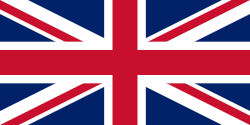 |
1858–1947 | The official state flag of the British Empire used in India | The Flag of the United Kingdom. |
 |
1801–1858 | Flag of the East India Company | A striped banner with the Union Jack in the canton. |
 |
1707–1801 | Flag of the East India Company | A striped banner with the Union Jack of Great Britain in the canton. |
 |
1600–1707 | Flag of the East India Company | A striped banner with Saint George's Cross in the canton. |
Princely states
[edit]French India
[edit]| Flag | Date | Use | Description |
|---|---|---|---|
 |
1667–1791 | Flag of the Kingdom of France | Flag of the Kingdom of France. |
 |
1791–1794 | 1791–1792: Flag of the Kingdom of France 1792–1794: Flag of the French First Republic |
The flag of France. |
 |
1814–1815 1815–1830 |
Flag of the Kingdom of France under the Bourbon Restoration | Flag of the Kingdom of France. |
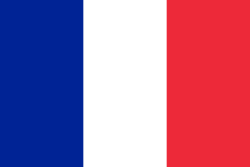 |
1794–1804, 1830–1940, 1944–1954 | 1794–1804: Flag of the French First Republic 1804–1814, 1815: Flag of the First French Empire 1830–1848; Flag of the Kingdom of France 1848–1852: Flag of the French Second Republic 1852–1870: Flag of the Second French Empire 1870–1940: Flag of the French Third Republic and French Empire 1944–1946: Flag of the Provisional Government of the Fourth French Republic 1946–1954: Flag of the French Fourth Republic and French Union |
The flag of France. |
 |
1940–1944 | Flag of French India under Free France | Flag of Free France with the Cross of Lorraine |
Portuguese India
[edit]| Flag | Date | Use | Description |
|---|---|---|---|
 |
1497–1521 | Flag of the Kingdom of Portugal. | |
 |
1578–1616 | Flag of the Kingdom of Portugal. | |
 |
1616–1640 | Flag of the Kingdom of Portugal. | |
 |
1640–1667 | Flag of the Kingdom of Portugal. | |
 |
17th and 18th centuries | Portuguese Indian Naval Ensign. | |
 |
1667–1706 | Flag of the Kingdom of Portugal. | |
 |
18th century | Portuguese Indian Merchant Ensign | |
 |
1706–1750 | Flag of the Kingdom of Portugal. | |
 |
1816–1826 | Flag of the United Kingdom of Portugal, Brazil and the Algarves. | |
 |
1826–1830 | Flag of the Kingdom of Portugal. | |
 |
1830–1910 | Flag of the Kingdom of Portugal. | Vertical bicolour blue-white. Proportion of the fields: 1:1. |
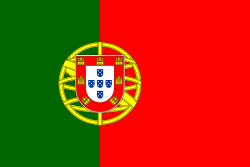 |
1910–1961 (de facto) 1910–1974 (de jure) |
Flag of the Portuguese Republic. The final state flag of Portuguese India. | Used from the implantation of the Portuguese Republic in 1910. Officially used until 1974, as Portugal only then recognised the Annexation of Portuguese India. |
 |
1967 (proposed) | Proposed official flag for Portuguese India in 1967. | Proposal by F. P. de Almeida Langhans. Never actually used. |

|
1935–1961 | Distinctive Flag of a Portuguese Overseas Governor-General (used by the Governor-General of Portuguese India) |
Dutch India
[edit]| Flag | Date | Use | Description |
|---|---|---|---|
 |
1605–1795 | The Prince's Flag | |
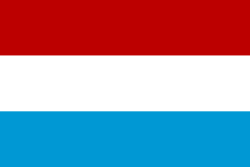 |
1652–1795 | States Flag | |
 |
1795–1806 | Flag of the Batavian Republic | |
 |
1813–1825 | Flag of Sovereign Principality of the United Netherlands and the United Kingdom of the Netherlands |
Danish India
[edit]| Flag | Date | Use | Description |
|---|---|---|---|
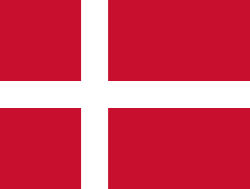 |
1620–1869 | The flag of Denmark (Denmark-Norway until 1814) |
Swedish India
[edit]| Flag | Date | Use | Description |
|---|---|---|---|
 |
1731–1813 | The flag of Sweden |
Austrian India
[edit]| Flag | Date | Use | Description |
|---|---|---|---|
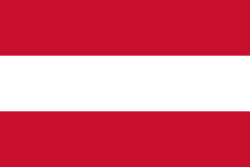 |
1778–1785 | The flag of Archduchy of Austria |
Indian independence movement
[edit]Flags used in the Indian independence movement
[edit]| Flag | Date | Use | Description |
|---|---|---|---|
 |
1906 | Calcutta flag | Three horizontal bands of equal width with the top being orange, the centre yellow, and the bottom green. It had eight half-opened lotus flowers on the top stripe, and a picture of the sun and a crescent moon on the bottom stripe. वन्दे मातरम् (Vande Mātaram) was inscribed in the centre in Devanagari. The partition of Bengal (1905) resulted in the introduction of a new Indian flag that sought to unite the multitude of castes and races within the country. The Vande Mataram flag, part of the Swadeshi movement against the British, comprised Indian religious symbols represented in western heraldic fashion. The tricolour flag included eight white lotuses on the upper green band representing the eight provinces, a sun and a crescent on the bottom red band, and the Vande Mataram slogan in Hindi on the central yellow band. The flag was launched in Calcutta bereft of any ceremony and the launch was only briefly covered by newspapers. The flag was not covered in contemporary governmental or political reports either, but was used at the annual session of the Indian National Congress. A slightly modified version was subsequently used by Madam Bhikaji Cama at the Second Socialist International Meeting in Stuttgart. Despite the multiple uses of the flag, it failed to generate enthusiasm amongst Indian nationalists.[71] |
 |
1907 | Early Indian nationalist flags [Note 15] | |
 |
|||
 |
1917 | Flag of the Home Rule Movement[Note 16] | Five red and four green horizontal stripes On the upper left quadrant was the Union Jack, which signified the Dominion status that the movement sought to achieve. A crescent and a star, both in white, are set in top fly. Seven white stars are arranged as in the Saptarishi constellation (the constellation Ursa Major), which is sacred to Hindus. |
 |
1931–1947 | The Swaraj Flag, officially adopted by the Indian National Congress in 1931. In the years 1943–1945 it was the official flag of the Azad Hind Imperial Japanese puppet government for India and the Indian National Army | |
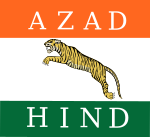 |
1942–1945 | Flag of the Indian Legion of the Waffen-SS of Nazi Germany | Three horizontal strips of saffron, white, and green, with a springing tiger in the centre. |
Proposed flags
[edit]| Flag | Date | Use | Description |
|---|---|---|---|

|
1902 | Design reported in the Daily Express to have been proposed as part of a series of Empire flags that would replace the Union Jack in representing individual territories of the British Empire[74] | The Cross of Saint George and the crown in the canton would have been present on all Empire flags to represent the English. In the top right would have been the emblem of the territory flying the flag, and in this case, the Star of India. A large sun in the centre symbolizes "the empire on which the sun never sets." |
 |
Proposed in 1904, used in April 1910 | Flag proposed in an issue of an Anglo-Indian weekly.[75] | Dark blue, green and light blue triband with a purple band at the hoist depicting the Orion constellation. A thin red border surrounds the whole flag. |
 |
1921 | Mahatma Gandhi's Original Proposal | |
 |
1921 | Gandhi's flag, introduced at the Indian National Congress meeting in 1921 | |
 |
1932 | Proposed flag for Portuguese India, designed by Afonso de Ornelas. | |
 |
1947 | Louis Mountbatten's proposed flag for India.[75] | The Swaraj flag with a small Union Flag in the canton. |
 |
1965 | Proposed official flag for Portuguese India in 1965. The proposal came after the annexation of the territories in 1961 and was part of a series of similar flags for the other colonies. | Proposal by F. P. de Almeida Langhans. Never actually used. |
Dominion of India
[edit]| Flag | Date | Use | Description |
|---|---|---|---|
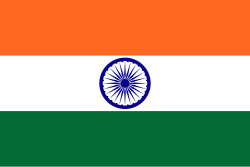 |
1947–1950 | Flag of the Dominion of India | A horizontal tricolour of saffron at the top, white in the middle, and green at the bottom. In the centre is a navy blue wheel with twenty-four spokes, known as the Ashoka Chakra. |
 |
1947–1950 | Flag of the governor-general of India | Dark blue field emblazoned with the royal crest (a Tudor Crown surmounted by the lion of England, itself wearing the crown), beneath which was the word 'India' in gold majuscules. Similar to flags used by other Governors-General of Commonwealth realms. |
|  || 1947–present || National flag of India || A horizontal tricolour of saffron at the top, white in the middle, and green at the bottom. In the centre is a navy blue wheel with twenty-four spokes, known as the Ashoka Chakra.
|}
|| 1947–present || National flag of India || A horizontal tricolour of saffron at the top, white in the middle, and green at the bottom. In the centre is a navy blue wheel with twenty-four spokes, known as the Ashoka Chakra.
|}
List of European colonies in Asia
[edit]Dutch, British, Spanish, Portuguese colonies and Russian territories in Asia: British colonies in East Asia, South Asia, and Southeast Asia:
British Empire
[edit]
 British Burma (1824–1948, merged with India by the British from 1886 to 1937)
British Burma (1824–1948, merged with India by the British from 1886 to 1937) British Ceylon (1815–1948, now Sri Lanka)
British Ceylon (1815–1948, now Sri Lanka) Colonial India (includes the territory of present-day India, Pakistan and Bangladesh)
Colonial India (includes the territory of present-day India, Pakistan and Bangladesh)
British India
[edit]- (British protectorate)
 British India (1613–1947)
British India (1613–1947)
 British East India Company (1757–1858)
British East India Company (1757–1858) British Raj (1858–1947)
British Raj (1858–1947)
Danish India
[edit] Danish India (1696–1869)
Danish India (1696–1869)
Sweden
[edit] Swedish Parangipettai (1733)
Swedish Parangipettai (1733)
French colonies in South and Southeast Asia:
[edit] French India (1769–1954)
French India (1769–1954)
Dutch India
[edit] Dutch India (1605–1825)
Dutch India (1605–1825) Dutch Bengal
Dutch Bengal Dutch Ceylon (1656–1796)
Dutch Ceylon (1656–1796)
Portuguese
[edit]
 Portuguese Ceylon (1505–1658)
Portuguese Ceylon (1505–1658)
 Portuguese India (1510–1961)
Portuguese India (1510–1961)
Russian Empire
[edit] Outer Manchuria – ceded to Russian Empire through Treaty of Aigun (1858) and Treaty of Peking (1860)
Outer Manchuria – ceded to Russian Empire through Treaty of Aigun (1858) and Treaty of Peking (1860)
Spanish Empire
[edit] Spanish Philippines (1565–1898, 3rd longest European occupation in Asia, 333 years),
Spanish Philippines (1565–1898, 3rd longest European occupation in Asia, 333 years),
USA Empire
[edit]India's protectorates
[edit] Bhutan (1947–1971).
Bhutan (1947–1971). Kingdom of Sikkim (1950–1975), later acceded to India as State of Sikkim.[76]
Kingdom of Sikkim (1950–1975), later acceded to India as State of Sikkim.[76]
Indian provisional government
[edit]Provisional Government to Indian independence
[edit]| No. | Name
(birth–death) |
Photograph | Elected | Took office | Left office | Vice President | Party | |
|---|---|---|---|---|---|---|---|---|
| Provisional Government of India | ||||||||
| 1 | Mahendra Pratap | — | 1915 | 1919 | Abdul Hafiz Mohamed Barakatullah | |||
| 2 | Abdul Hafiz Mohamed Barakatullah | — | 1919 | 1919 | Mahendra Pratap | |||
Subhas Chandra Bose Provisional Government to Indian independence
[edit]| No. | Name
(birth–death) |
Photograph | Elected | Took office | Left office | Vice President | Party | |
|---|---|---|---|---|---|---|---|---|
| Provisional Government of India | ||||||||
| 1 | Subhas Chandra Bose | — | 1941 | 1945 | Mohan Singh and Iwaichi Fujiwara founders of the First Indian National Army | |||
President of the Executive Council
[edit]| No. | Portrait | Name | Term of office | Political party | |
|---|---|---|---|---|---|
| 1 | Jawaharlal Nehru
Vice-President of the Executive Council |
1945 | 15 August 1947 |
Indian National Congress | |
List of Party Congresses Communist Party of India (Marxist)
[edit]Communist Party of India
[edit]Leadership
[edit]The 24th Party Congress of Communist Party of India was held from 14 to 18 October 2022 in Vijayawada, Andhra Pradesh.
General Secretary
[edit]National Secretariat
[edit]- D. Raja
- Amarjeet Kaur
- K. Narayana
- Bhalchandra Kango
- Pallab Sen Gupta
- Binoy Viswam
- Syed Azeez Pasha
- Nagendra Nath Ojha
- Rama Krushna Panda
- Annie Raja[84]
- Girish Chandra Sharma[85]
List of general secretaries and chairmen of the CPI
[edit]Article XXXII of the party constitution says:
"The tenure of the General Secretary and Deputy General Secretary, if any, and State Secretaries is limited to two consecutive terms—a term being of not less than two years. In exceptional cases, the unit concerned may decide by three-fourth majority through secret ballot to allow two more terms. In case such a motion is adopted that comrade also can contest in the election along with other candidates. As regards the tenure of the office-bearers at district and lower levels, the state councils will frame rules where necessary."[86]
| Number | Photo | Name | Tenure |
|---|---|---|---|
| 1st | Sachchidanand Vishnu Ghate | 1925–1933 | |
| 2nd |  |
Gangadhar Adhikari | 1933–1935 |
| 3rd |  |
Puran Chand Joshi | 1936–1948 |
| 4th |  |
B. T. Ranadive | 1948–1950 |
| 5th | Chandra Rajeswara Rao | 1950–1951 | |
| 6th | Ajoy Ghosh | 1951–1962 | |
| Chairman | 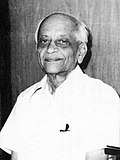 |
Shripad Amrit Dange | 1962–1981 |
| 7th |  |
E. M. S. Namboodiripad | 1962–1964 |
| (-) | Chandra Rajeswara Rao | 1964–1990 | |
| 8th | Indrajit Gupta | 1990–1996 | |
| 9th | 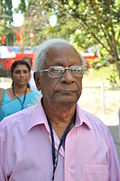 |
Ardhendu Bhushan Bardhan | 1996–2012 |
| 10th |  |
Suravaram Sudhakar Reddy | 2012–2019 |
| 11th |  |
D. Raja | 2019–Incumbent |
Communist Party of India (Maoist)
[edit]List of Sarsanghchalak
[edit]- Acting
| No. | Name | Portrait | Term | Period | Ref. |
|---|---|---|---|---|---|
| 1 | K. B. Hedgewar | 
|
27 September 1925–1930 | 5 Years | [92] |
| - | Laxman Vasudev Paranjape | 1930–1931 | 1 Year | [93] | |
| (1) | K. B. Hedgewar | 
|
1931–21 June 1940 | 9 years | |
| 2 | M. S. Golwalkar | 
|
21 June 1940–5 June 1973 | 32 years, 349 days | [94] |
| 3 | Madhukar Dattatraya Deoras | 
|
5 June 1973–March 1994 | 21 Years | [95] |
| 4 | Rajendra Singh | March 1994–10 March 2000 | 6 years | [96] | |
| 5 | K. S. Sudarshan | 10 March 2000–21 March 2009 | 9 years, 11 days | [97] | |
| 6 | Mohan Bhagwat | 
|
21 March 2009–Incumbent | 16 years, 81 days | [98] |
See also
[edit]- President of India
- Vice President of India
- List of presidents of India
- List of vice presidents of India
External links
[edit]Footnotes
[edit]- † Assassinated or died in office
- § Returned to office after a previous non-consecutive term
- RES Resigned
- NC Resigned following a no-confidence motion
Notes
[edit]- ^ Victoria's husband Prince Albert died on 14 December 1861.
- ^ Edward VIII abdicated after less than one year of reign.
- ^ A durbar was deemed expensive and impractical due to poverty and demands for independence.[6]
- ^ Originally joined on 28 April 1772.
- ^ Earl Cornwallis from 1762; created Marquess Cornwallis (1792).
- ^ Created Marquess Wellesley (1799).
- ^ Earl of Moira prior to being created Marquess of Hastings in 1816.
- ^ Created Earl Amherst in 1826.
- ^ Created Earl of Auckland in 1839.
- ^ Created Viscount Hardinge in 1846.
- ^ Created Marquess of Dalhousie 1849.
- ^ a b Created Earl Canning 1859.
- ^ Oliver Russell, 2nd Baron Ampthill was acting Governor-General in 1904.
- ^ Created Earl Mountbatten of Burma on 28 October 1947.
- ^ Around the same time, another proposal for the flag was initiated by Sister Nivedita, a Hindu reformist and disciple of Swami Vivekananda. The flag consisted of a thunderbolt in the centre and a hundred and eight oil lamps for the border, with the Vande Mataram caption split around the thunderbolt. It was also presented at the Indian National Congress meeting in 1906.[72] Soon, many other proposals were initiated, but none of them gained attention from the nationalist movement.
- ^ In 1916, Suraiya Tayyabji submitted thirty new designs, in the form of a booklet funded by members of the High Court of Madras. These many proposals and recommendations did little more than keep the flag movement alive. The same year, Annie Besant and Bal Gangadhar Tilak adopted a new flag as part of the Home Rule Movement. The flag included the Union Jack in the upper left corner, a star and crescent in the upper right, and seven stars displayed diagonally from the lower right, on a background of five red and four green alternating bands. The flag resulted in the first governmental initiative against any nationalistic flag, as a magistrate in Coimbatore banned its use. The ban was followed by a public debate on the function and importance of a national flag.[73]
References
[edit]- ^ Delhi Sultanate, Encyclopædia Britannica
- ^ A. Schimmel, Islam in the Indian Subcontinent, Leiden, 1980
- ^ Sen, Sailendra (2013). A Textbook of Medieval Indian History. Primus Books. pp. 68–102. ISBN 978-9-38060-734-4.
- ^ Chapman, Graham. "Religious vs. regional determinism: India, Pakistan and Bangladesh as inheritors of empire." Shared space: Divided space. Essays on conflict and territorial organization (1990): 106-134.
- ^ "سلاطین دہلی - وجود". www.wujood.com (in Urdu). Retrieved 2023-11-13.
- ^ Vickers, Hugo (2006), Elizabeth: The Queen Mother, Arrow Books/Random House, p. 175, ISBN 978-0-09-947662-7
- ^ "Amini Commission 1776 - Banglapedia". en.banglapedia.org. Retrieved 21 March 2022.
- ^ One or more of the preceding sentences incorporates text from a publication now in the public domain: Chisholm, Hugh, ed. (1911). "Rohilla". Encyclopædia Britannica. Vol. 23 (11th ed.). Cambridge University Press. p. 461.
- ^ "Administrative Reforms of Robert clive". britannica.com. Retrieved 16 August 2020.
- ^ Clarke, John James (1 January 1997). Oriental Enlightenment: The Encounter Between Asian and Western Thought. Psychology Press. ISBN 9780415133753.
- ^ Reddy, Krishna (2017). Indian History (2nd ed.). Chennai: McGraw Hill Education (India) Pvt. Ltd. pp. C.53. ISBN 9789352606627.
- ^ Reddy, Vinodh (28 October 2015). "Governors-General of India (1772–1857)". EduGeneral. Archived from the original on 1 July 2020. Retrieved 30 June 2020.
- ^ "Treaty of Sagauli | British-Nepalese history [1816]". Encyclopædia Britannica. Retrieved 2020-05-27.
- ^ "Lessons unlearned". The Economist. ISSN 0013-0613. Retrieved 2023-07-16.
- ^ "Sind-British conflict". Britanica.com. Retrieved 21 March 2022.
- ^ Information Management Group, IIT Roorkee. "Indian Institute of Technology Roorkee Index". www.iitr.ac.in.
- ^ "India - Government of India Act of 1858". www.britannica.com. Retrieved 22 March 2022.
- ^ "Police Act. 1861" (PDF). Ministry of Home Affairs. Retrieved 22 March 2022.
- ^ a b c Reddy, Krishna (2017). Indian History (2nd ed.). Chennai: McGraw Hill Education (India) Pvt. Ltd. pp. C.55. ISBN 9789352606627.
- ^ "How Viceroy Lord Mayo's Assassination Led To Creation Of India's First Intelligence Bureau". Outlook India. 14 February 2022. Retrieved 22 March 2022.
- ^ "Arms Act, 1878" (PDF). myanmar-law-library.org. Retrieved 22 March 2022.
- ^ "Lord Ripon: Father of Local Self Government in India". thenationaltv.com. Retrieved 22 March 2022.
- ^ "Hunter Commission - Banglapedia". en.banglapedia.org. Retrieved 22 March 2022.
- ^ "A Short History of Burma". New Internationalist. 18 April 2008. Retrieved 22 March 2022.
- ^ https://eprints.soas.ac.uk/33561/1/11010320.pdf [bare URL PDF]
- ^ "Lee Commission". www.britannica.com. Retrieved 23 March 2022.
- ^ "Hartog Committee Report, 1929". Your Article Library. 22 December 2014. Retrieved 23 March 2022.
- ^ "Former Vice Presidents | Vice President of India | Government of India". vicepresidentofindia.nic.in. Retrieved 28 October 2021.
- ^ Venning, Timothy (2005). Compendium of British Office Holders. Basingstoke, Hampshire: Palgrave MacMillan. pp. 316–319. ISBN 1-4039-2045-1.
- ^ "President of the Board of Control". Parliamentary Debates (Hansard). Retrieved 7 August 2017.
- ^ Resigned after being injured in a hunting accident.
- ^ Resigned.
- ^ Resigned.
- ^ Ward, Adolphus William; Gooch, George Peabody (22 December 2011). The Cambridge History of British Foreign Policy, 1783–1919. Cambridge University Press. ISBN 978-1-108-04013-6.
All three areas were controlled by the East India Company as virtual Vakil-i-mutlaq (Lieutenant- Plenipotentiary) of the Mughal Emperor
- ^ Congress, Indian History (1966). Proceedings of the Indian History Congress: Parts 1–2.
The Emperor also honoured Mahadji Sindhia with the title of Vakil-i-Mutlaq or Regent Plenipotentiary, the highest post in the imperial government
- ^ Hussain, Syed (2006). Bahadur Shah Zafar and the War of 1857 in Delhi. Aakar Books. p. 83. ISBN 978-81-87879-91-6.
The following year when Afrasiyab Khan was also killed, Shah Alam appointed Madhaji Sindia as Amiru-l Umara and gave him two patents. -one contained a firman appointing the Peshwa as Vakil-i mutlaq, i.e., vicegerent of the Mughul Empire, and another vested in Madhaji Sindia command of the army as Deputy of the Peshwa-as a guarantee for the pay of the troops; the provinces of Dehli and Agra were assigned to him but they were made subject to a primary charge of Rs. 65,000 as a monthly payment for the household and personal expenses of the Emperor.
- ^ Malik, Dr Malti (1943). History of India. New Saraswati House India Pvt Ltd. ISBN 978-81-7335-498-4.
{{cite book}}: ISBN / Date incompatibility (help) - ^ "Mughal Administration: Key Features & Structure". Jagranjosh.com. 2015-10-21. Retrieved 2020-06-03.
- ^ Elliot, Henry; Downson, John (1867). The History of India, as Told by Its Own Historians p. 257–259. London: Trübner & Co. – via Wayback Machine.
- ^ a b c Mehta, Jl. Advanced Study in the History of Medieval India. Sterling Publishers Pvt. Ltd. ISBN 978-81-207-1015-3.
- ^ a b c d e f g h i Sharma, Gauri (2006). Prime Ministers Under the Mughals 1526-1707. Kanishka, New Delhi. ISBN 8173918236.
- ^ Satish Chandra (2005). Medieval India: From Sultanat to the Mughals Part - II. Har-Anand Publications. p. 136. ISBN 978-81-241-1066-9.
- ^ Alfred J. Andrea, James H. Overfield (1998). The Human Record: To 1700. Houghton Mifflin. p. 476. ISBN 978-0-395-87087-7.
Abul Fazl(1551-1602), the emperor's chief advisor and confidant from 1579 until Abul Fazl's assassination at the instigation of Prince Salim, the future Emperor Jahangir(r. 1605-1627)
- ^ Abraham Richard Fuller (1990). The Shah Jahan Nama of 'Inayat Khan: An Abridged History of the Mughal Emperor Shah Jahan. University of Michigan. p. 602. ISBN 978-0-19-562489-2.
- ^ Adolf Simon Waley (1927). The Shah Jahan Nama of 'Inayat Khan: An Abridged History of the Mughal Emperor Shah Jahan, Compiled by His Royal Librarian : the Nineteenth-century Manuscript Translation of A.R. Fuller (British Library, Add. 30,777). Constable.
- ^ Indian Institute of Public Administration (1976). The Indian Journal of Public Administration: Quarterly Journal of the Indian Institute of Public Administration, Volume 22. The Institute.
- ^ Indian History Congress - Proceedings: Volume 42. Indian History Congress. 1981.
- ^ Indian History Congress - Proceedings: Volume 42. Indian History Congress. 1981.
- ^ Indian Institute of Public Administration (1976). The Indian Journal of Public Administration: Quarterly Journal of the Indian Institute of Public Administration, Volume 22. The Institute.
- ^ Indian History Congress Proceedings: Volume 42. Indian History Congress. 1981.
- ^ Krieger-Krynicki, Annie (2005). Captive Princess: Zebunissa, Daughter of Emperor Aurangzeb. University of Michigan. ISBN 0195798376.
- ^ Kaicker, Abhishek (3 Feb 2020). The King and the People: Sovereignty and Popular Politics in Mughal Delhi. Oxford University Press. ISBN 978-0190070687.
- ^ William Irvine (1971). Later Mughals. Atlantic Publishers & Distri. p. 128.
- ^ John F. Richards, The New Cambridge History of India: The Mughal Empire (New York: Cambridge University Press, 1993), p. 262
- ^ Encyclopaedia Britannica, Inc. (2009). Britannica Guide to India. Encyclopaedia Britannica, Inc. ISBN 978-1593398477.
- ^ C. K. Srinivasan (1962). Baji Rao I, the Great Peshwa. Asia Publishing House. p. 22.
- ^ Encyclopaedia Britannica, Inc. (2009). Britannica Guide to India. Encyclopaedia Britannica, Inc. ISBN 978-1593398477.
- ^ Disha Experts (17 Dec 2018). The History Compendium for IAS Prelims General Studies Paper 1 & State PSC Exams 3rd Edition. Disha Publications. ISBN 978-9388373036.
- ^ Disha Experts (17 Dec 2018). The History Compendium for IAS Prelims General Studies Paper 1 & State PSC Exams 3rd Edition. Disha Publications. ISBN 978-9388373036.
- ^ Khwaja, Sehar. "Fosterage and Motherhood in the Mughal Harem: Intimate Relations and the Political System in Eighteenth-Century India." Social Scientist 46, no. 5-6 (2018): 39-60. Accessed August 7, 2020. doi:10.2307/26530803.
- ^ Khwaja, Sehar. "Fosterage and Motherhood in the Mughal Harem: Intimate Relations and the Political System in Eighteenth-Century India." Social Scientist 46, no. 5-6 (2018): 39-60. Accessed August 7, 2020. doi:10.2307/26530803.
- ^ List based on: Danvers, Frederick Charles (1988) The Portuguese in India: being a history of the rise and decline of their eastern empire. Asian Educational Services; p. 487 (Appendix B); and Henry Morse Stephens (1892) Albuquerque, Oxford: Clarendon Press, Vol. 4, p. 13
- ^ a b Cabinet Responsibility to Legislature. Lok Sabha Secretariat. 2004. ISBN 9788120004009.
{{cite book}}:|work=ignored (help) - ^ The Statesman's Year-Book 1963: The One-Volume ENCYCLOPAEDIA of all nations. MACMILLAN&Co.LTD, London. 1963. ISBN 9780230270893.
{{cite book}}: ISBN / Date incompatibility (help);|work=ignored (help) - ^ "Civil Affairs". Monthly Journal of Local Govt. and Public Administration in India. 1958.
- ^ The Statesman's Year-Book 1960: The One-Volume ENCYCLOPAEDIA of all nations. MACMILLAN&Co.LTD, London. 1960. ISBN 9780230270893.
{{cite book}}: ISBN / Date incompatibility (help);|work=ignored (help) - ^ The Statesman's Year-Book 1963: The One-Volume ENCYCLOPAEDIA of all nations. MACMILLAN&Co.LTD, London. 1963. pp. 474–475. ISBN 9780230270923.
{{cite book}}: ISBN / Date incompatibility (help);|work=ignored (help) - ^ "HART, Sir John (d.1604), of St. Swithin's, London and Scampton, Lincs". History of parliament.
- ^ The Emergence of International Business, 1200–1800: The English East India Company. p. Appendix.
- ^ "A panorama in 12 folds showing the procession of the Emperor Bahadur Shah to celebrate the feast of the 'Id. f. 59v-A". British Library. Archived from the original on 20 December 2016. Retrieved 2023-06-06.
- ^ Virmani, Arundhati (August 1999). "National Symbols under Colonial Domination: The Nationalization of the Indian Flag, March–August 1923". Past & Present (164): 175–176. doi:10.1093/past/164.1.169. JSTOR 651278.
- ^ Roy, Srirupa (August 2006). "A Symbol of Freedom: The Indian Flag and the Transformations of Nationalism, 1906–". Journal of Asian Studies. 65 (3): 498–499. ISSN 0021-9118. OCLC 37893507.
- ^ Virmani 1999, pp. 176–177
- ^ "A British Empire Flag". The New York Times. The London Express. 9 February 1902. p. 3. Retrieved 20 August 2023 – via The New York Times Archives.
- ^ a b Dipesh Navsaria (July 27, 1996). "Indian Flag Proposals". Flags of the World. Retrieved March 14, 2020.
- ^ Hoffmann, Protectorates (1987), pp. 336–339.
- ^ Rajasekaran, Ilangovan (7 April 2025). "CPI(M) elects M.A. Baby as its new general secretary at the 24th Party Congress". Frontline. Archived from the original on 7 April 2025.
- ^ "Yechury elected general secretary for 3rd term; 1st Dalit in CPM's politburo". The Times of India. 11 April 2022.
- ^ "Full list: CPI(M) newly elected central committee and politburo members". The Indian Express. 22 April 2018. Archived from the original on 22 April 2018.
- ^ "Sitaram Yechury elected as new CPM chief". Business Standard. 20 April 2015.
- ^ a b c d e f g h i j k l m "Members of PB – 7th to 19th Congress". Communist Party of India (Marxist).
- ^ "Prakash Karat takes over CPI(M) reins". The Times of India. 11 April 2005.
- ^ Nossiter, Thomas Johnson (1982). Communism in Kerala: A Study in Political Adaptation. C. Hurst for the Royal Institute of International Affairs. ISBN 9780905838403.
- ^ "Annie Raja elected to CPI national secretariat". 14 July 2024. Archived from the original on 17 July 2024. Retrieved 17 July 2024.
- ^ "National executive meeting begins; Annie Raja in CPI national secretariat".
- ^ "Communist Party of India". 5 September 2018. Archived from the original on 19 April 2021. Retrieved 19 April 2021.
- ^ "20th Party Congress, Hyderabad". newageweekly.in. Archived from the original on 19 September 2020. Retrieved 7 September 2020.
- ^ "Sudhakar Reddy steps into Bardhan's shoes as CPI general secretary". thehindu.com. Archived from the original on 1 May 2021. Retrieved 1 May 2021.
- ^ "Sudhakar Reddy is CPI general secretary again". thehindu.com. Archived from the original on 1 May 2021. Retrieved 1 May 2021.
- ^ "Sudhakar Reddy unanimously re-elected CPI general secretary". business-standard.com. Archived from the original on 1 May 2021. Retrieved 1 May 2021.
- ^ "D. Raja takes over as CPI general secretary". The Hindu. 21 July 2019. Archived from the original on 8 January 2021. Retrieved 1 May 2021.
- ^ Puniyani, Ram (2005-07-21). Religion, Power and Violence: Expression of Politics in Contemporary Times. p. 125. ISBN 0761933387.
- ^ Mohta, Tanmay (8 February 2011). "Rashtriya Swayamsevak Sangh (RSS)". Blog. Archived from the original on 25 August 2018. Retrieved 18 August 2018.
- ^ Jaffrelot, Christophe. The Hindu Nationalist Movement and Indian Politics. C. Hurst & Co. Publishers. p. 39.
- ^ Banerjee, Sumanta. Shrinking space: minority rights in South Asia. South Asia Forum for Human Rights, 1999. p. 171.
- ^ Islam, Shamsul (2006). Religious Dimensions of Indian Nationalism: A Study of RSS. Anamika Pub & Distributors. p. 36. ISBN 9788174952363. Retrieved 18 August 2018.
- ^ Jaffrelot, Christophe (2010). Religion, Caste, and Politics in India. Primus Books. p. 205. ISBN 9789380607047.
- ^ "RSS chief Mohan Bhagwat urges youth to follow path shown by leaders". Times Now. 13 August 2018. Archived from the original on 13 August 2018. Retrieved 18 August 2018.





